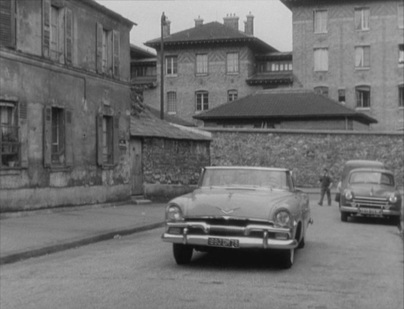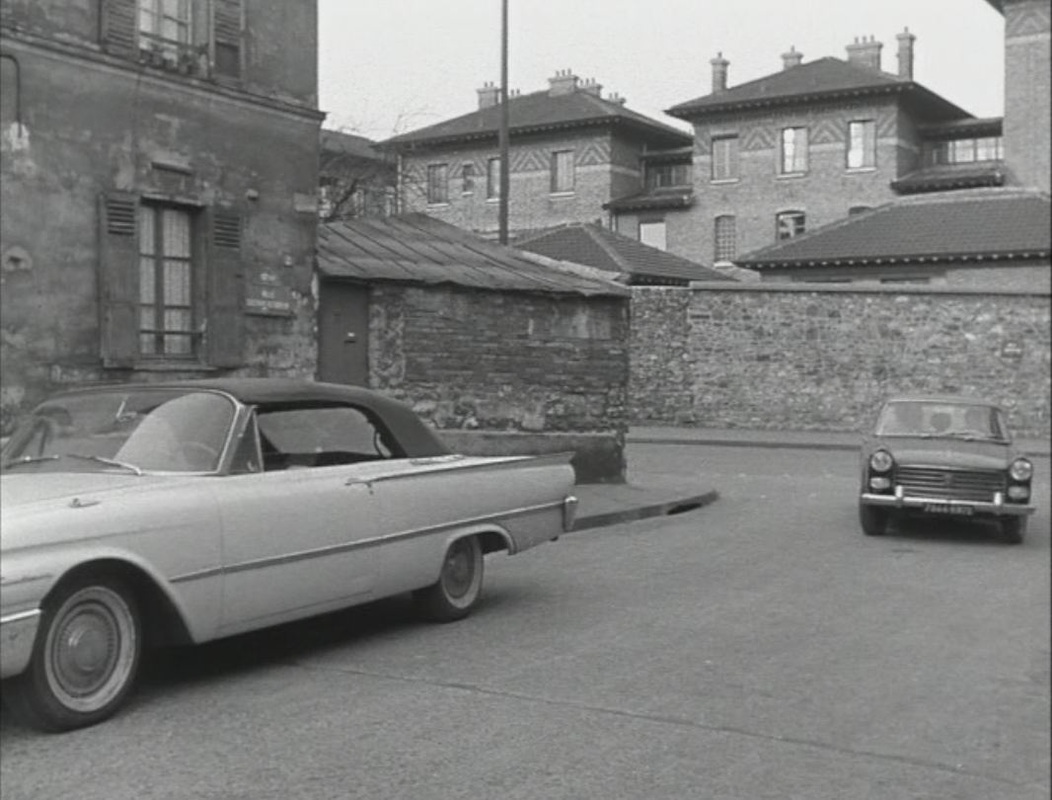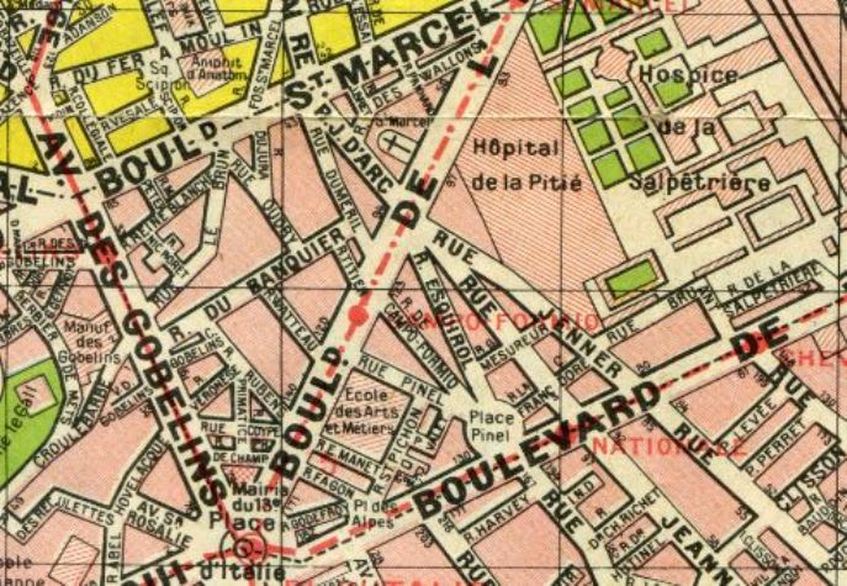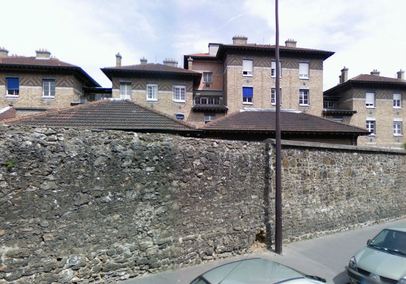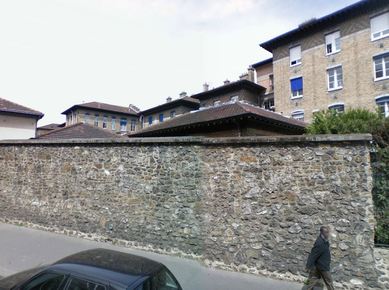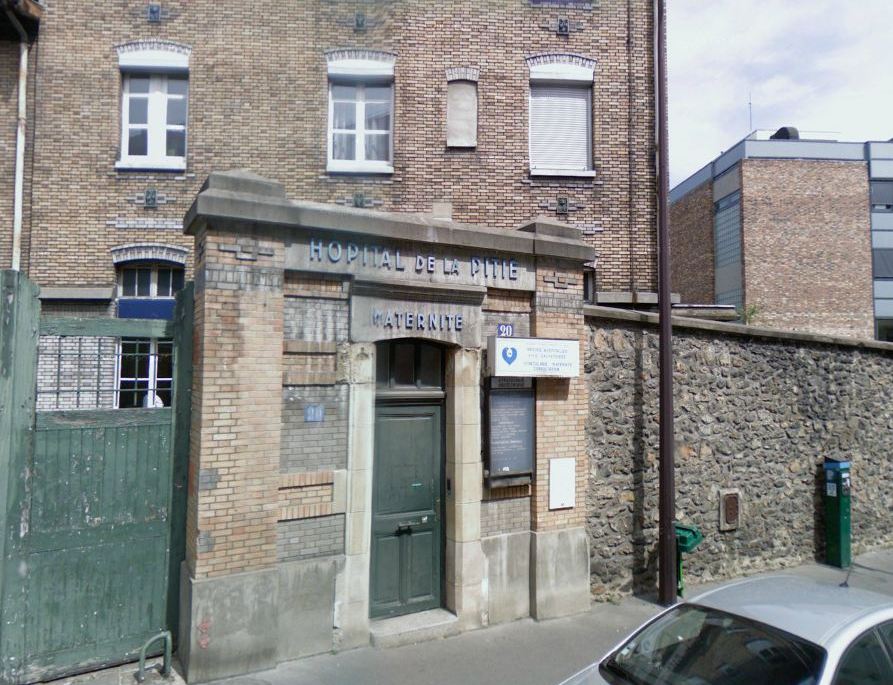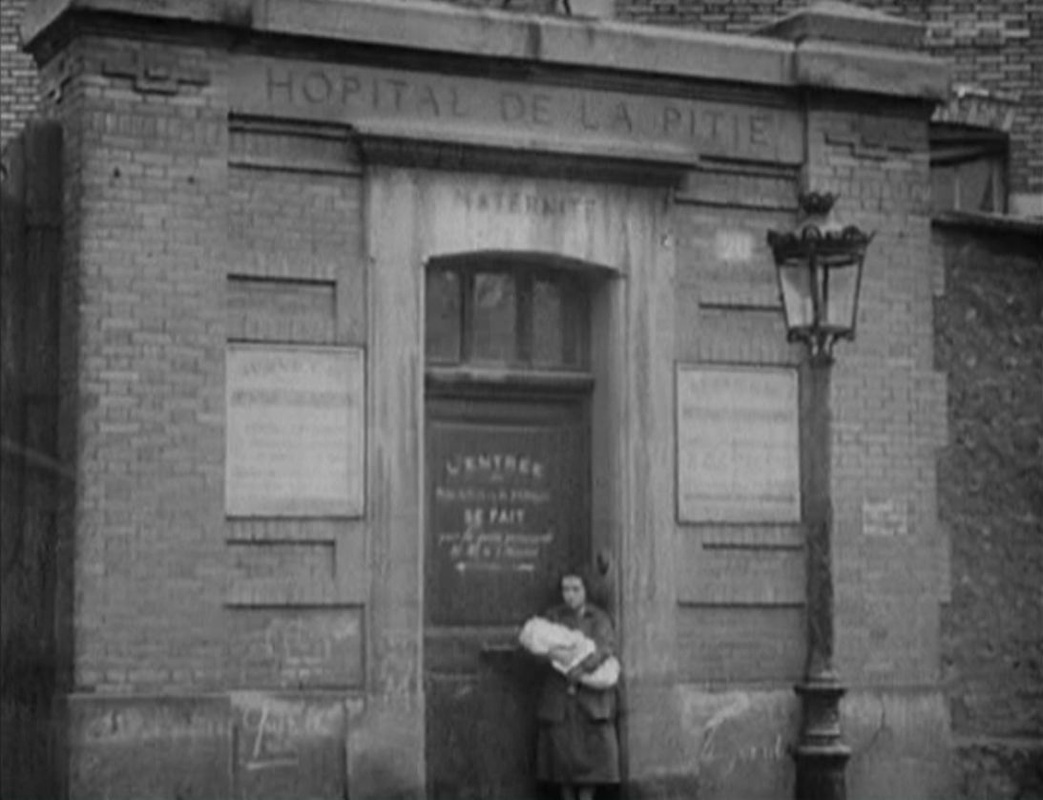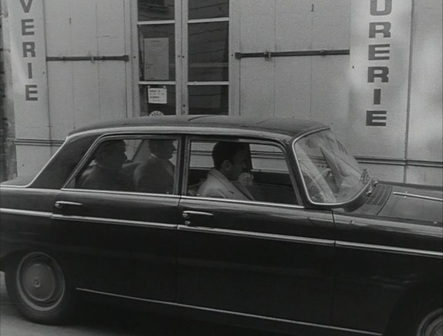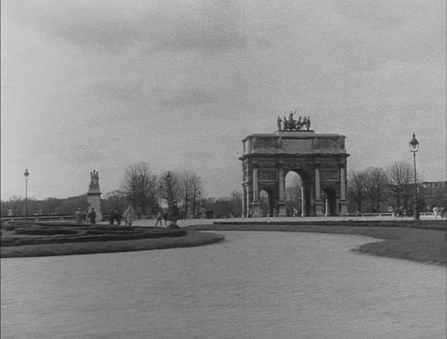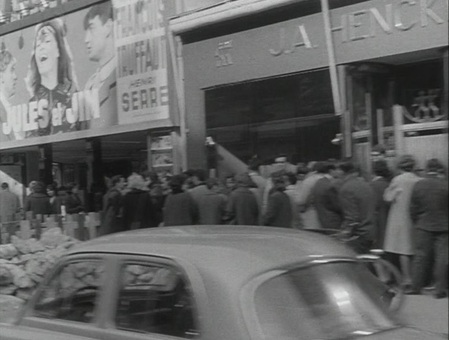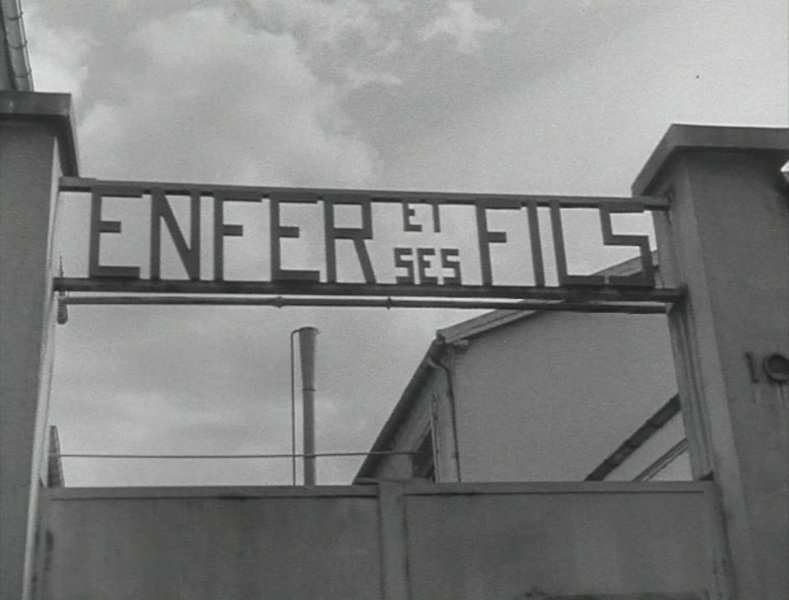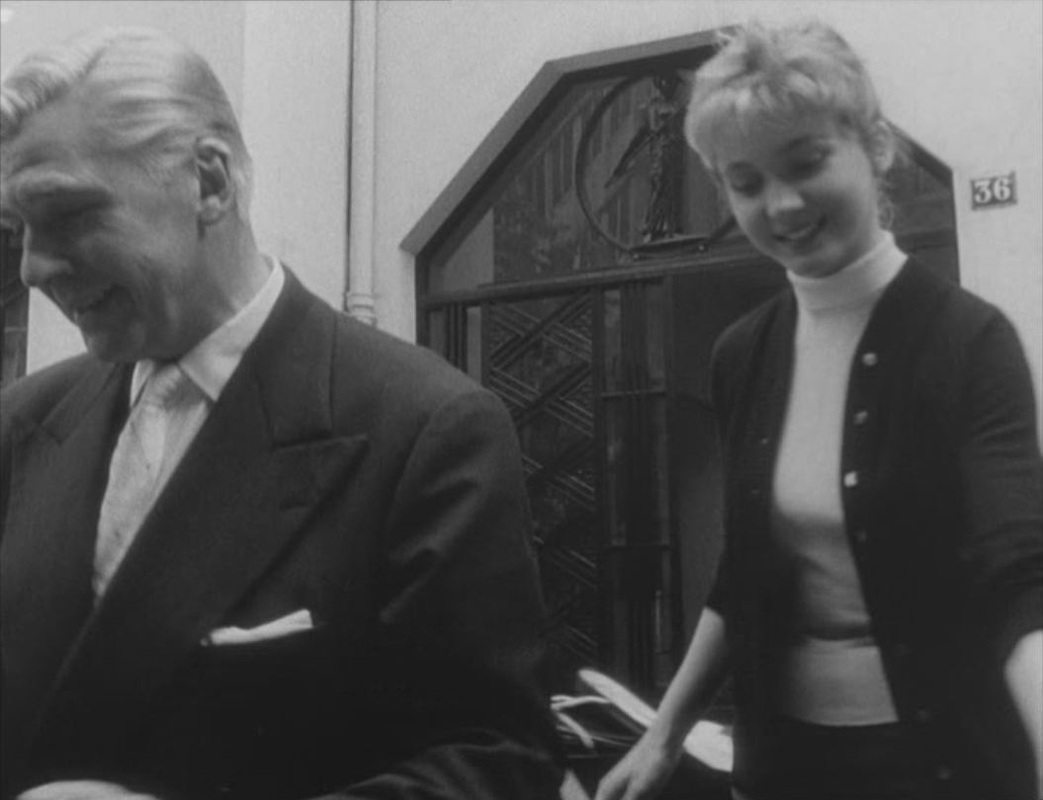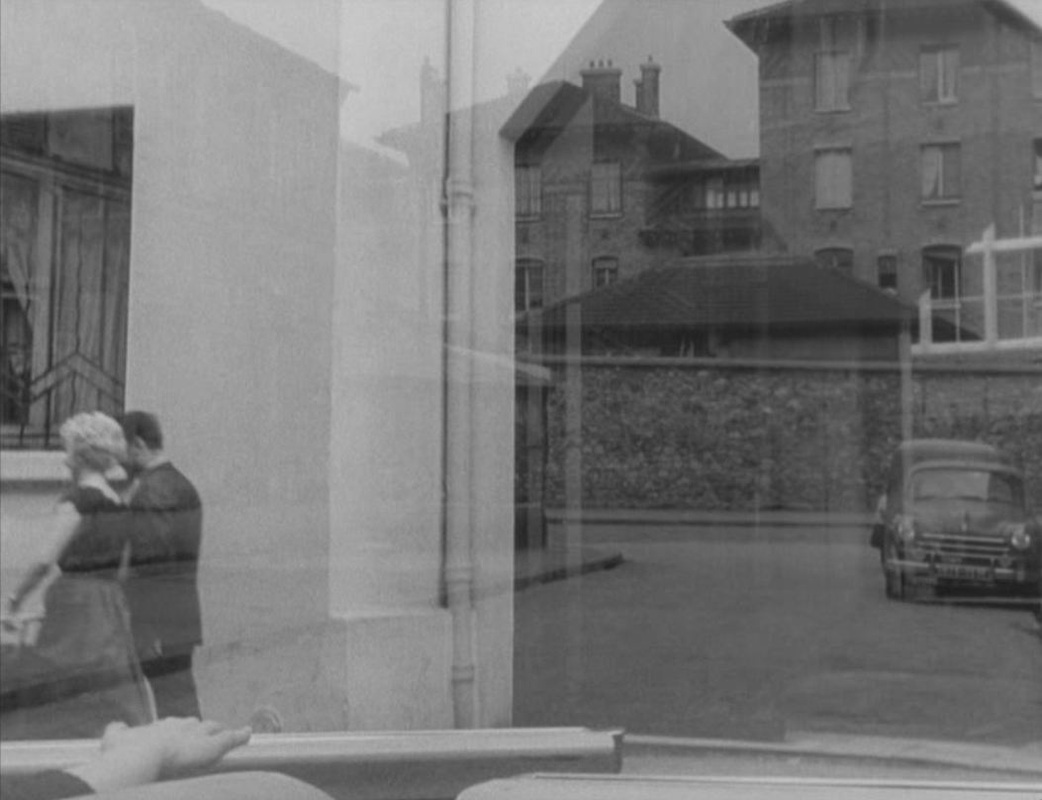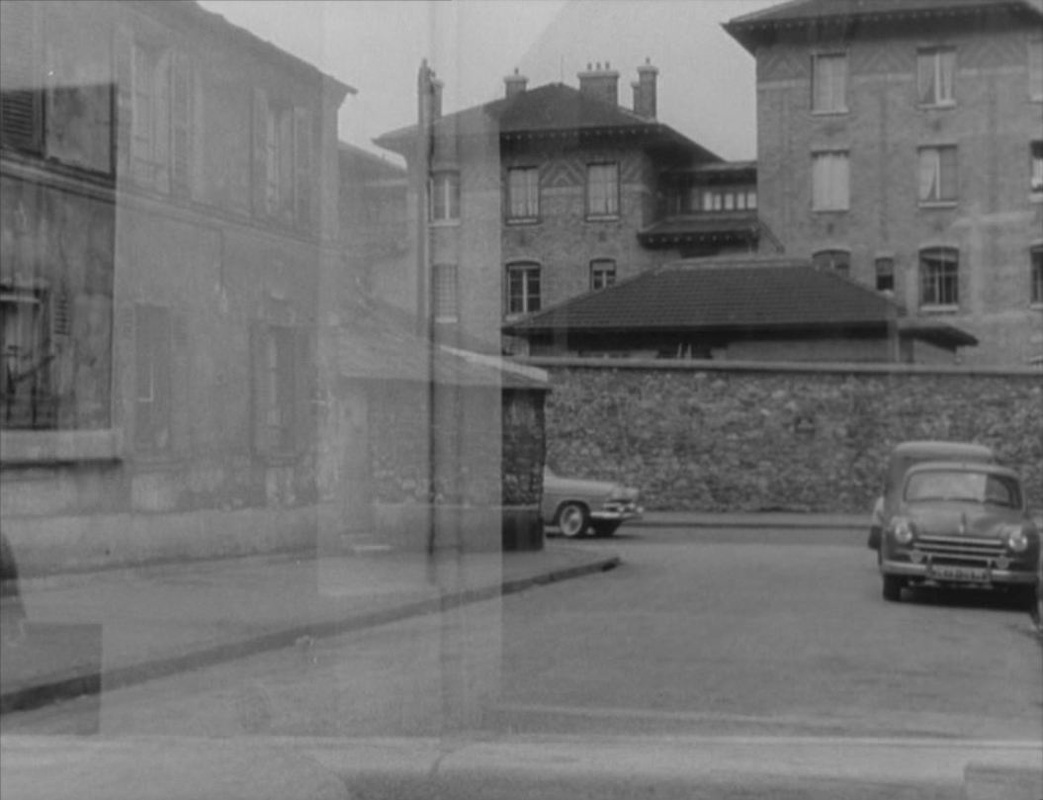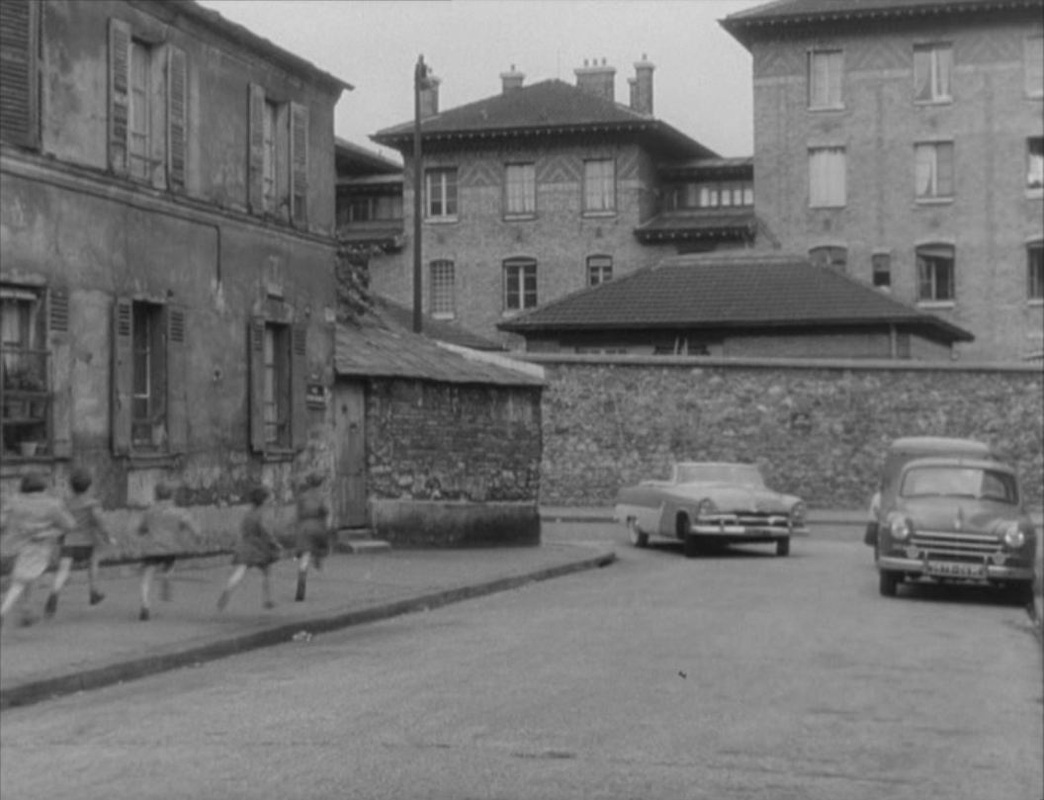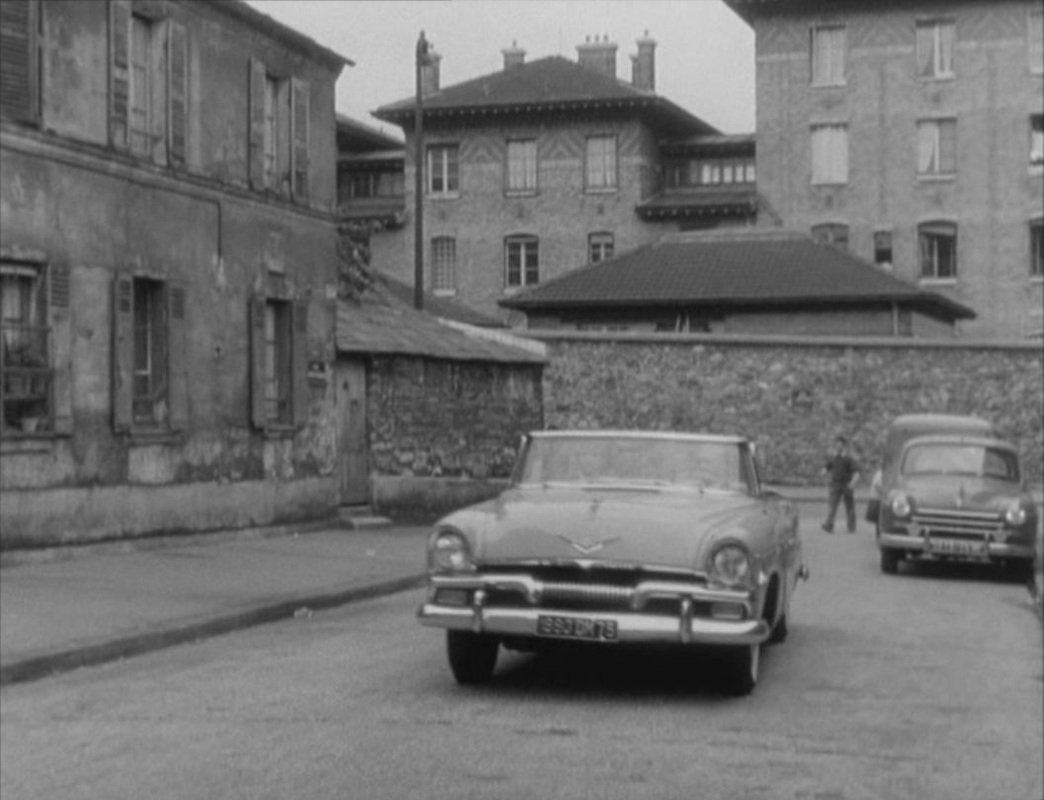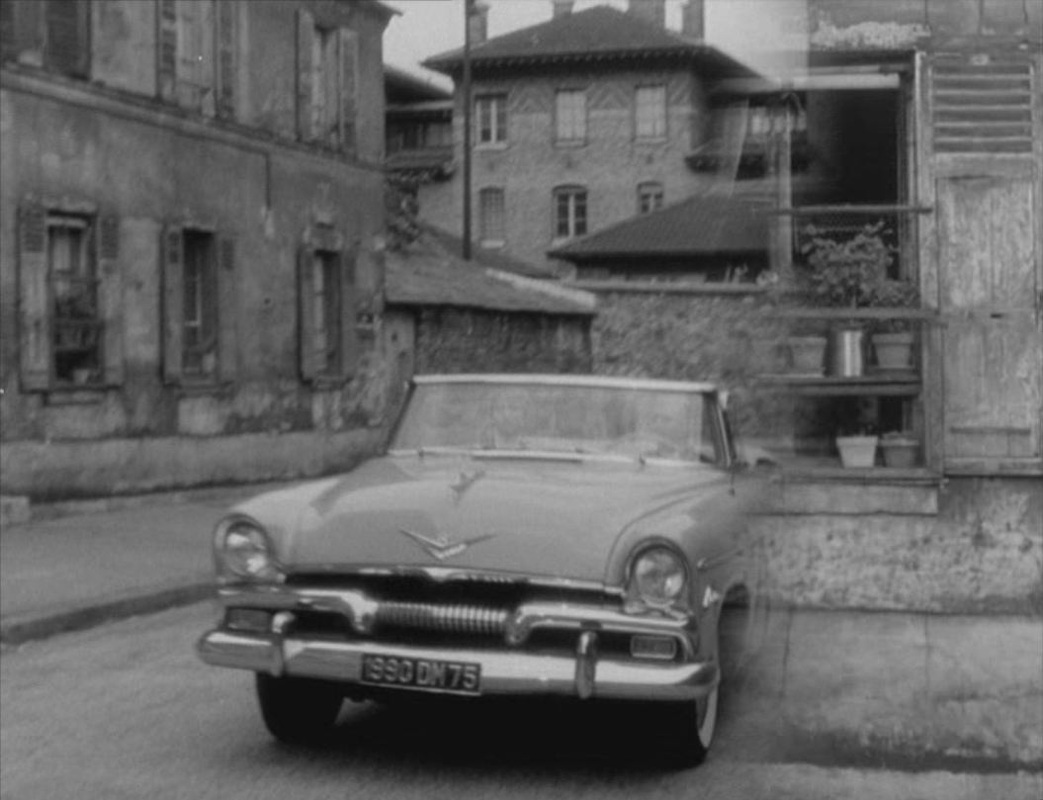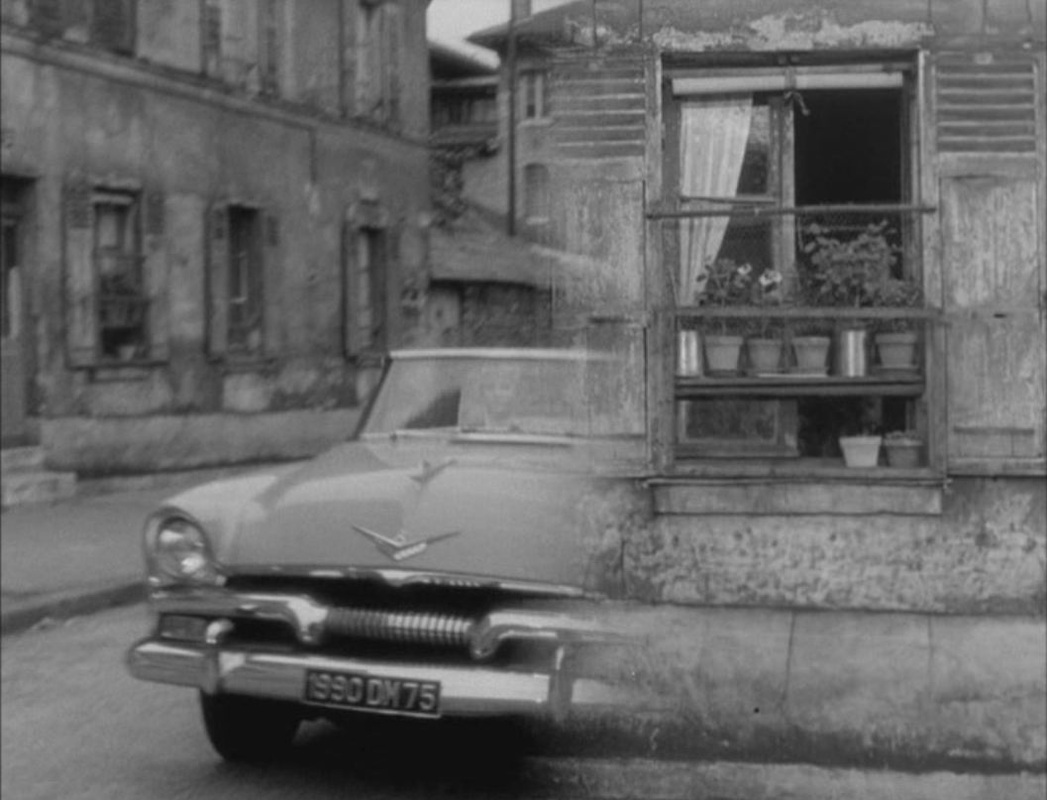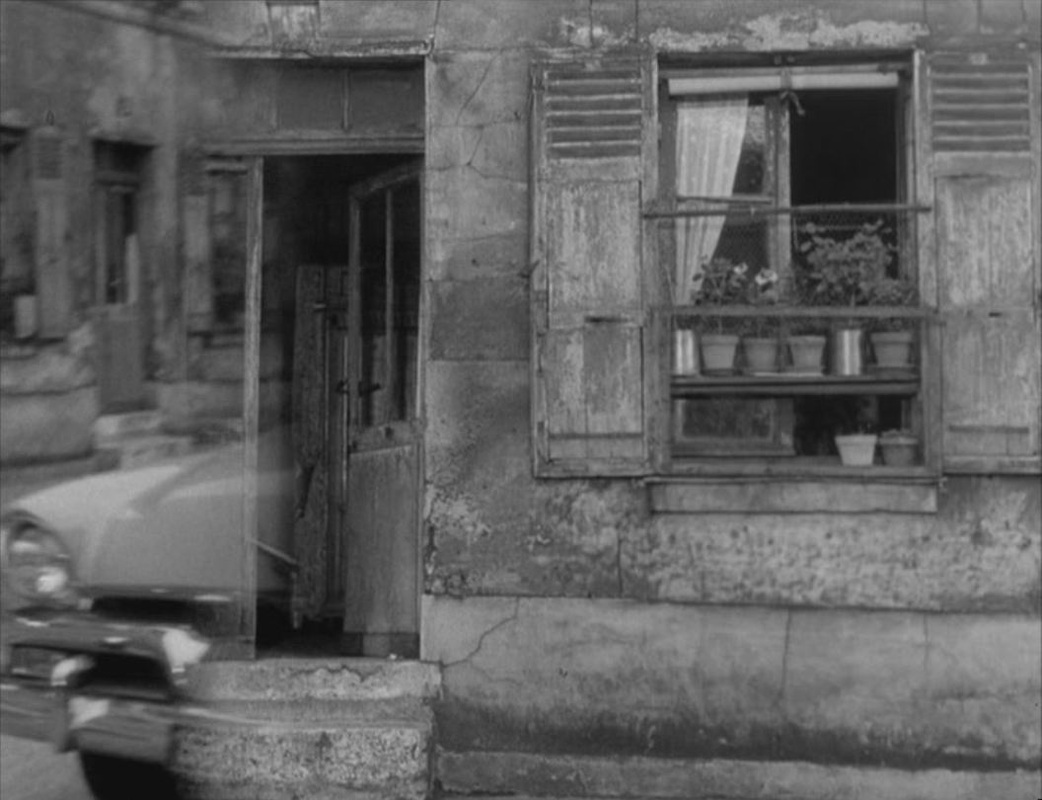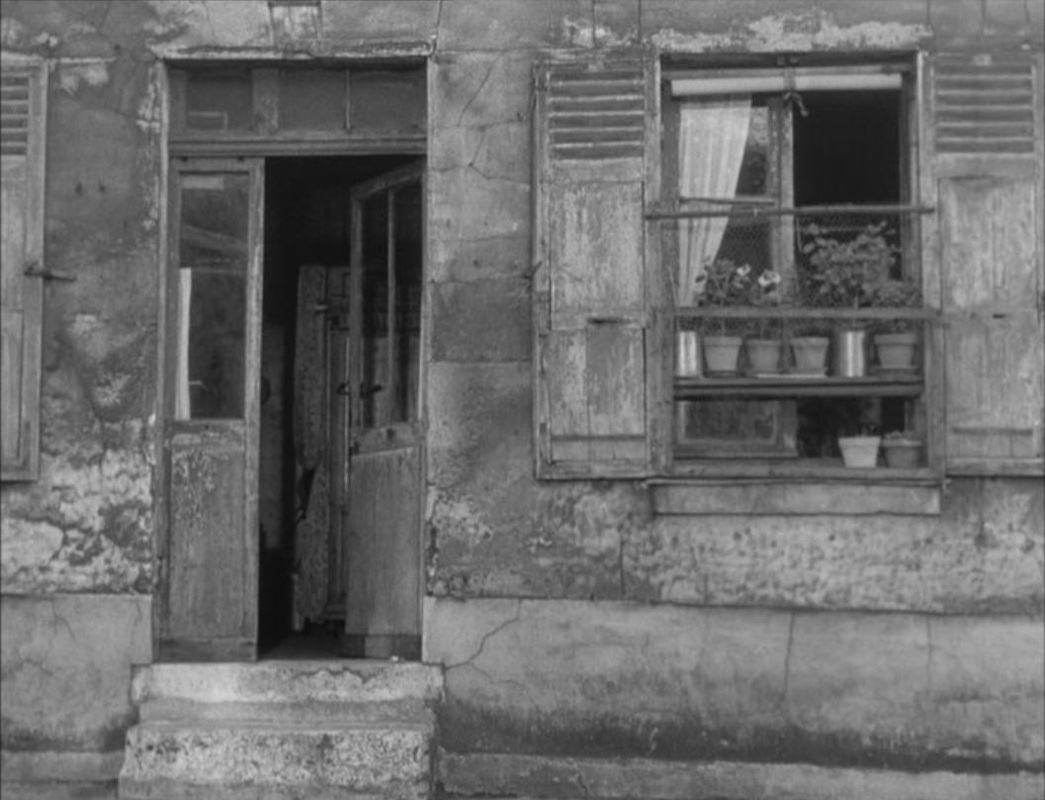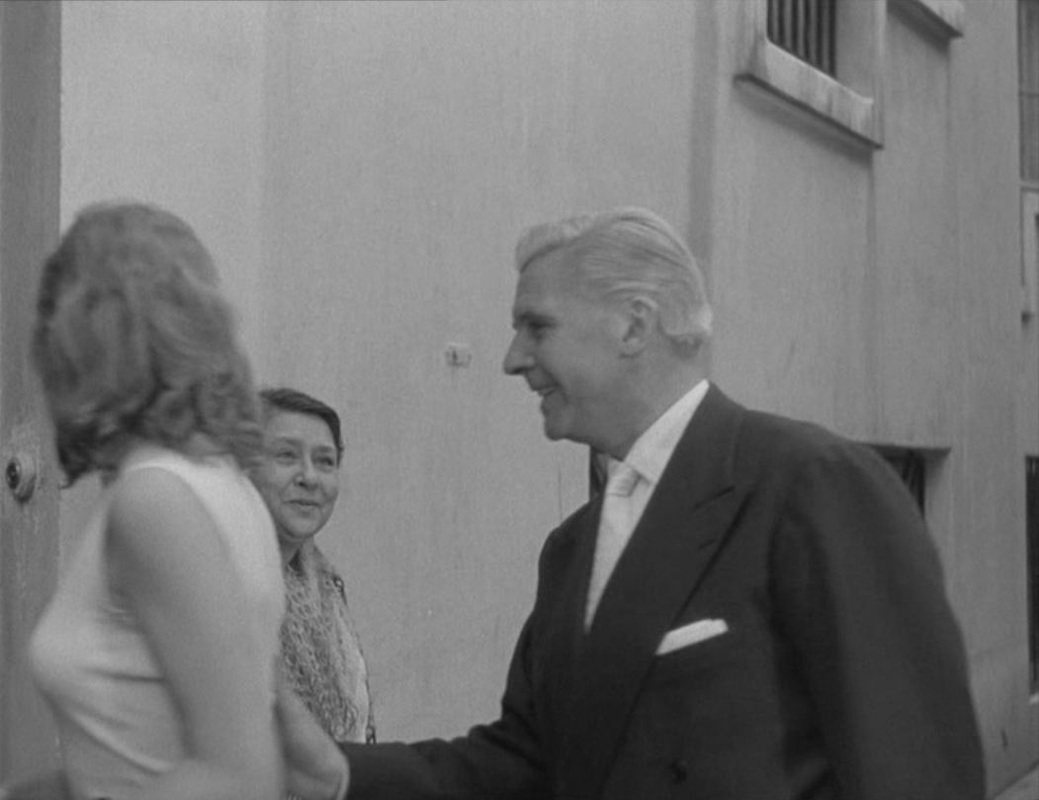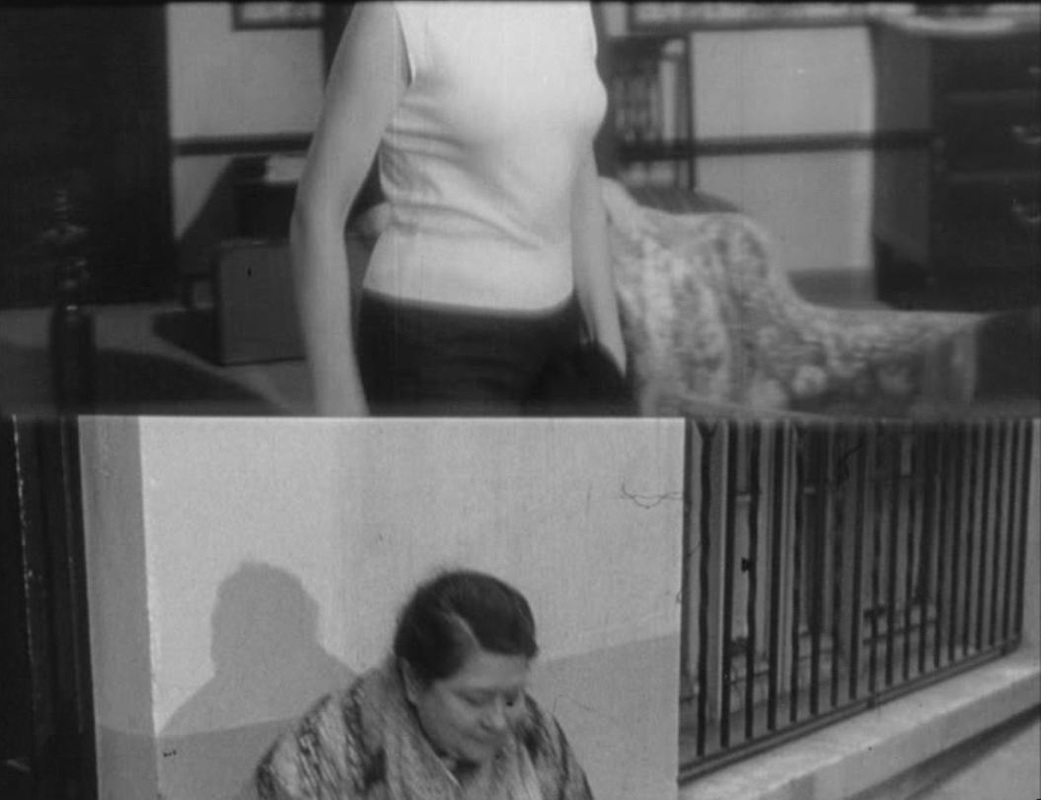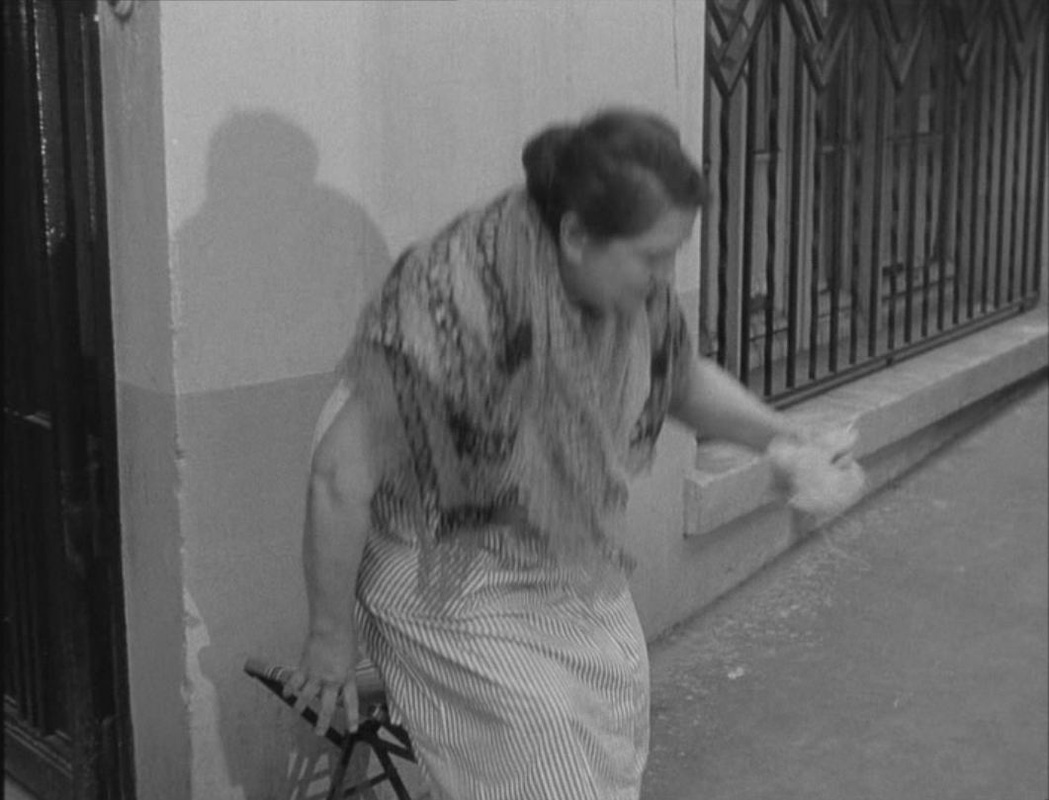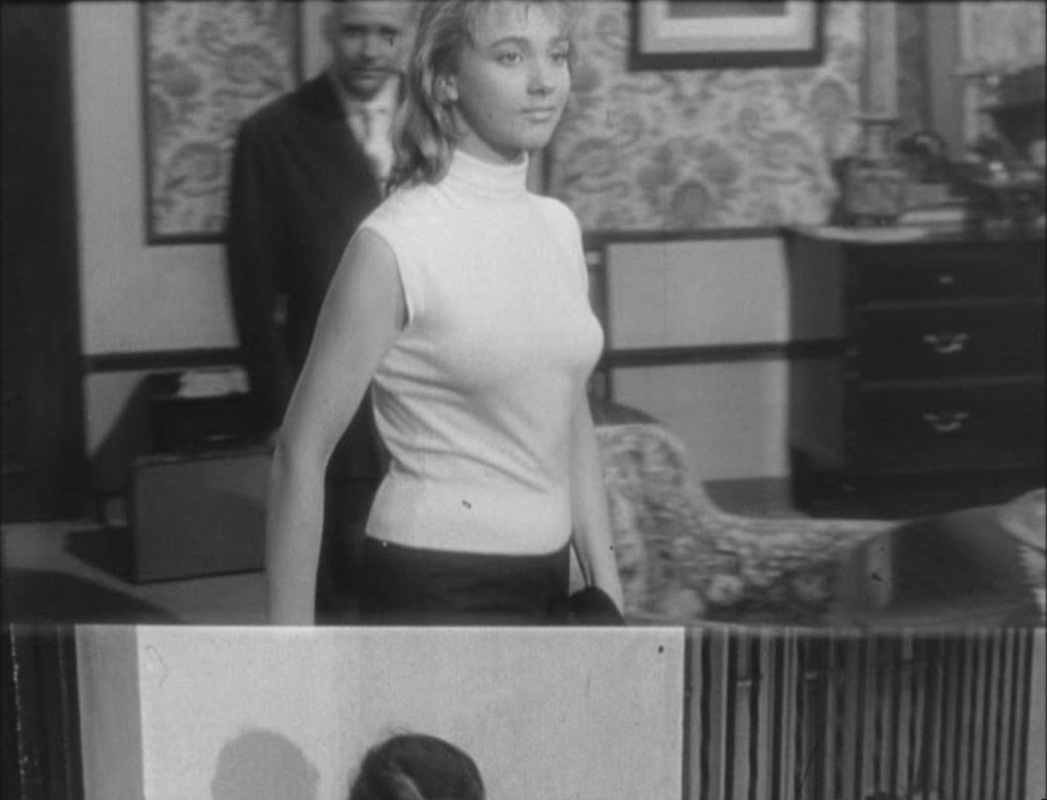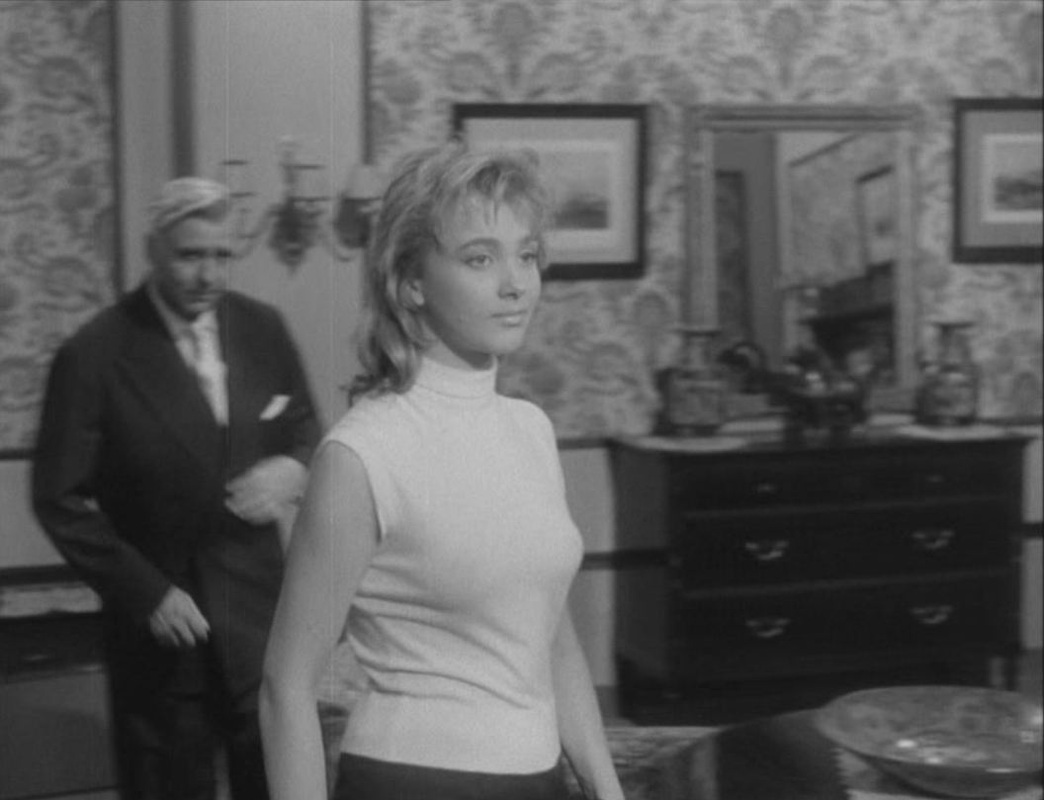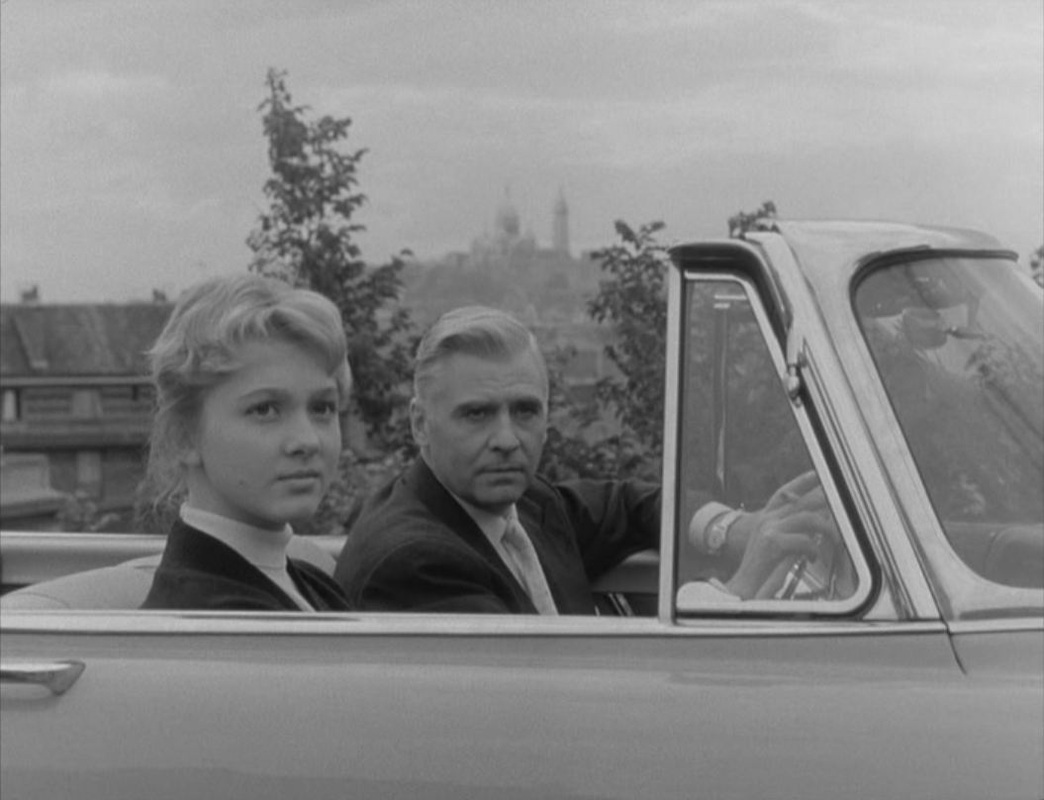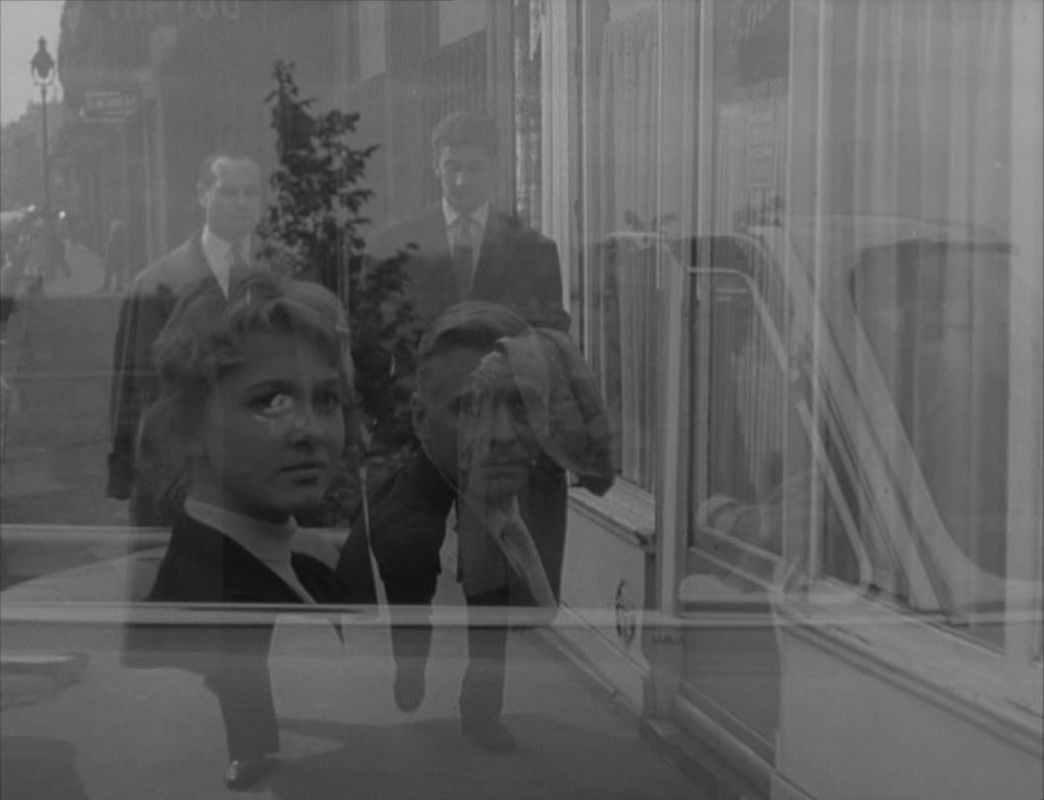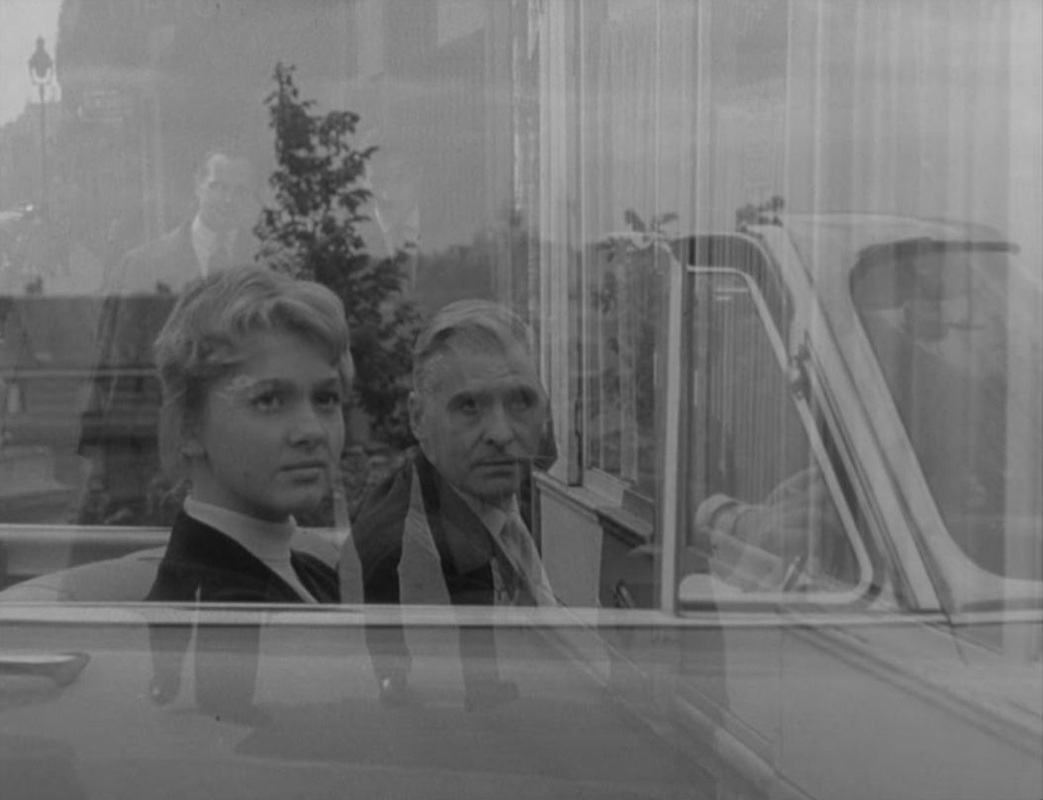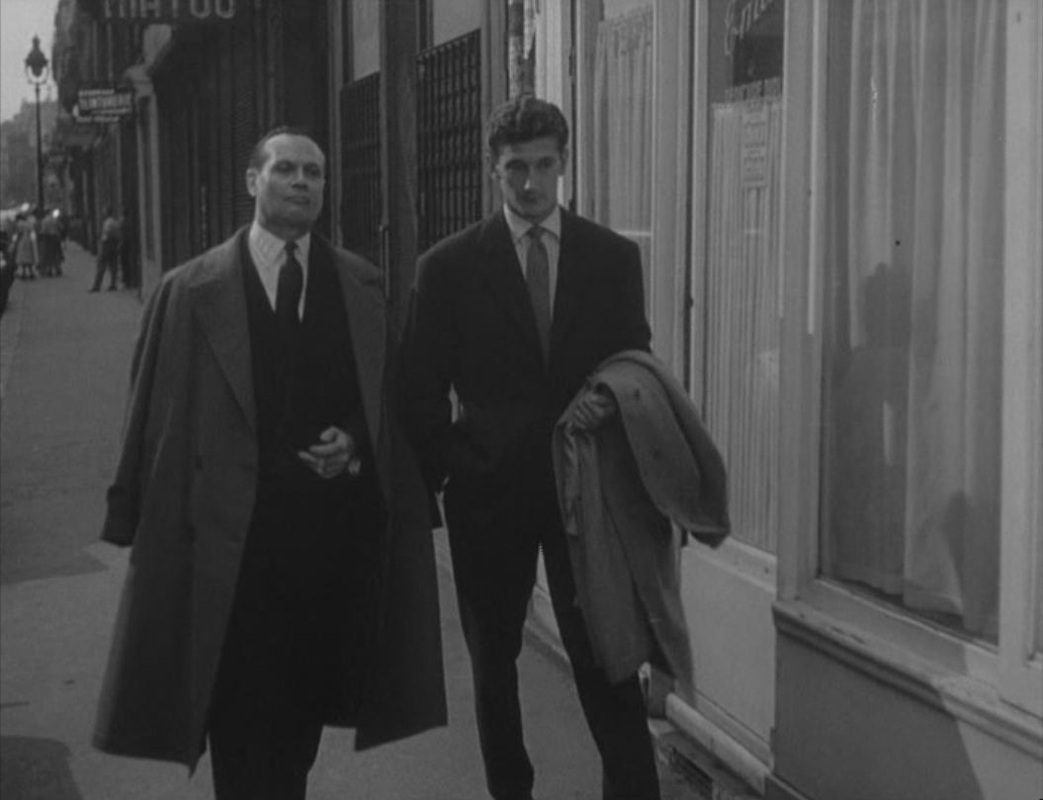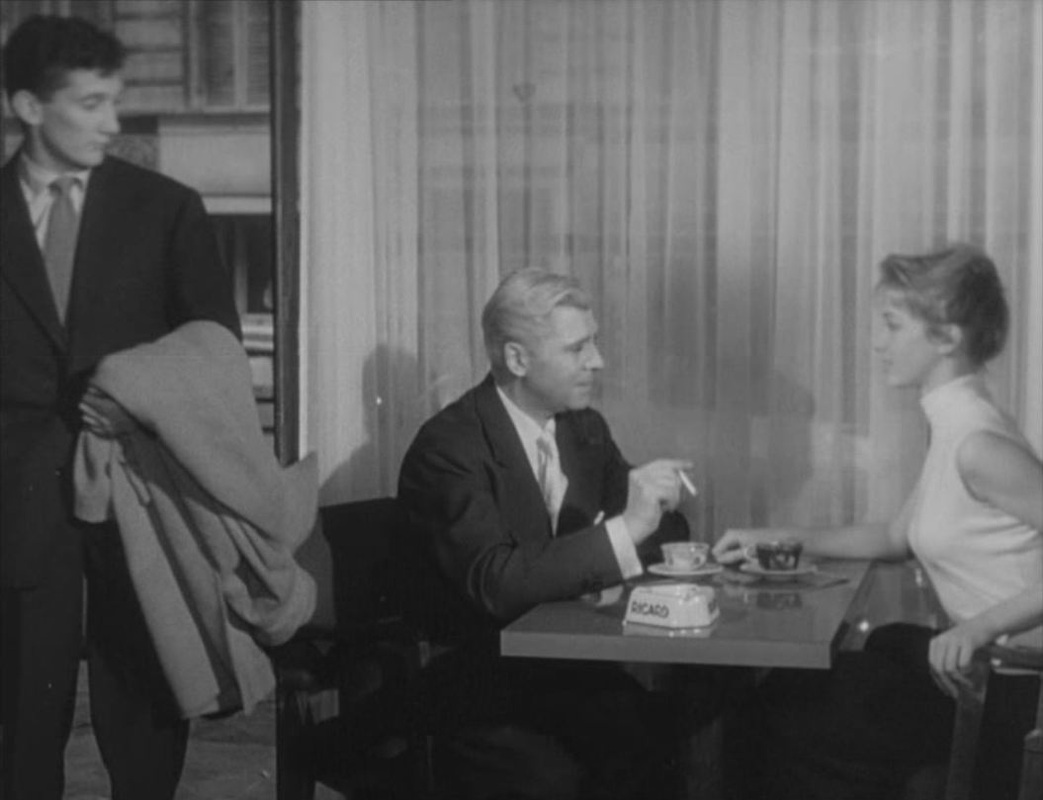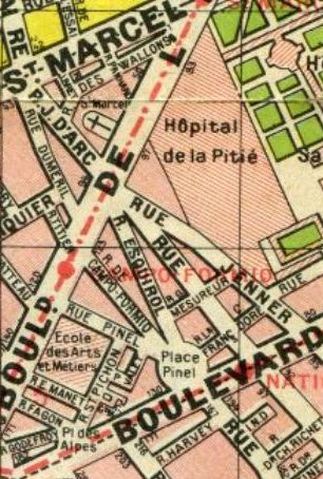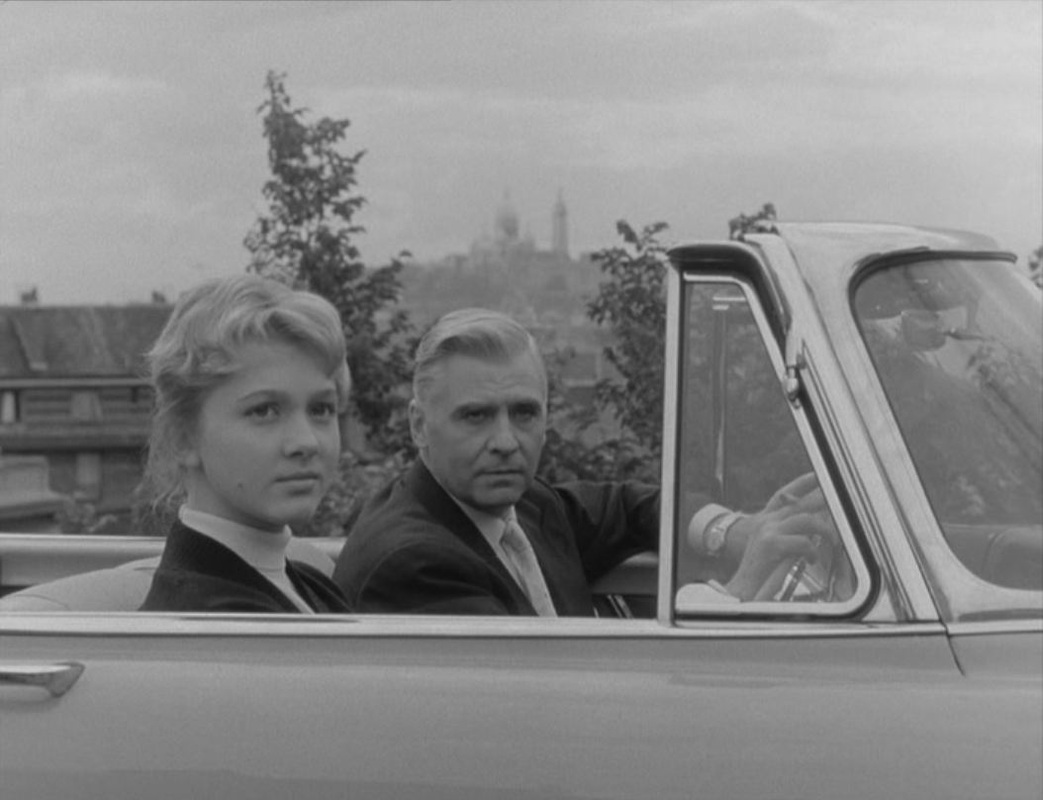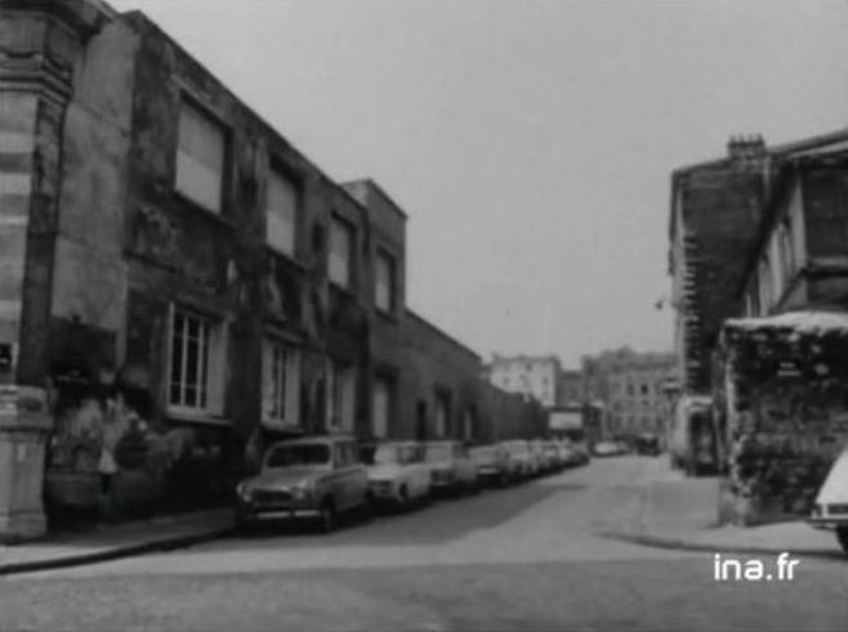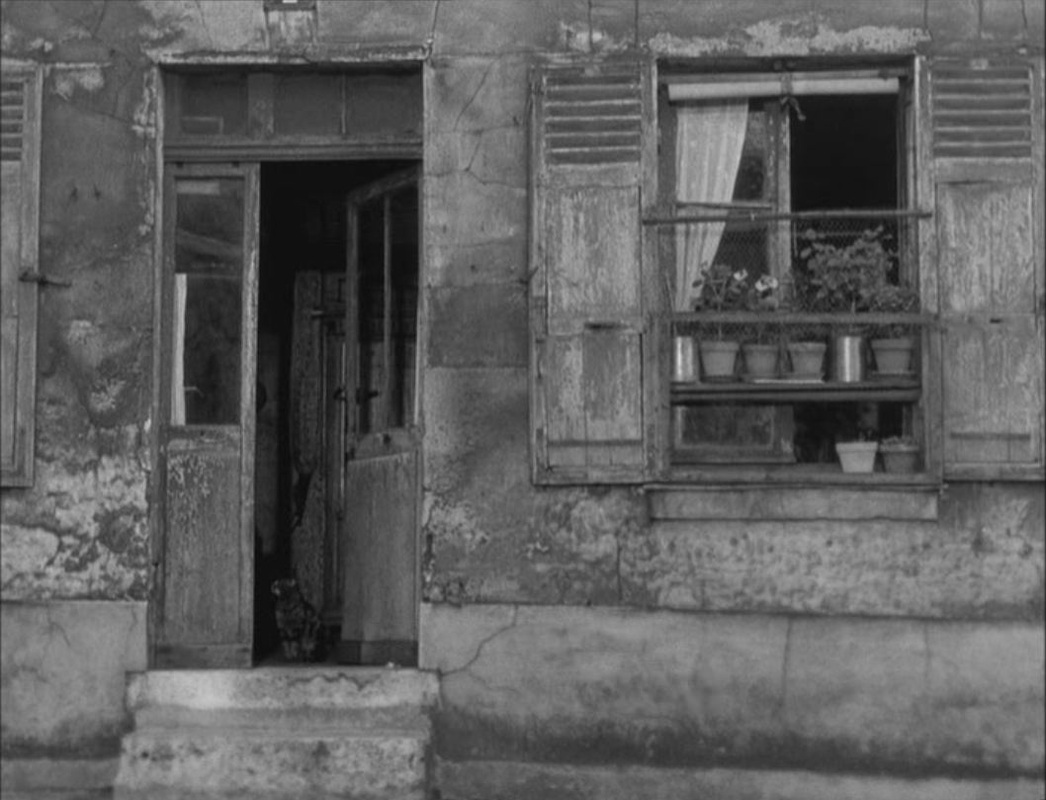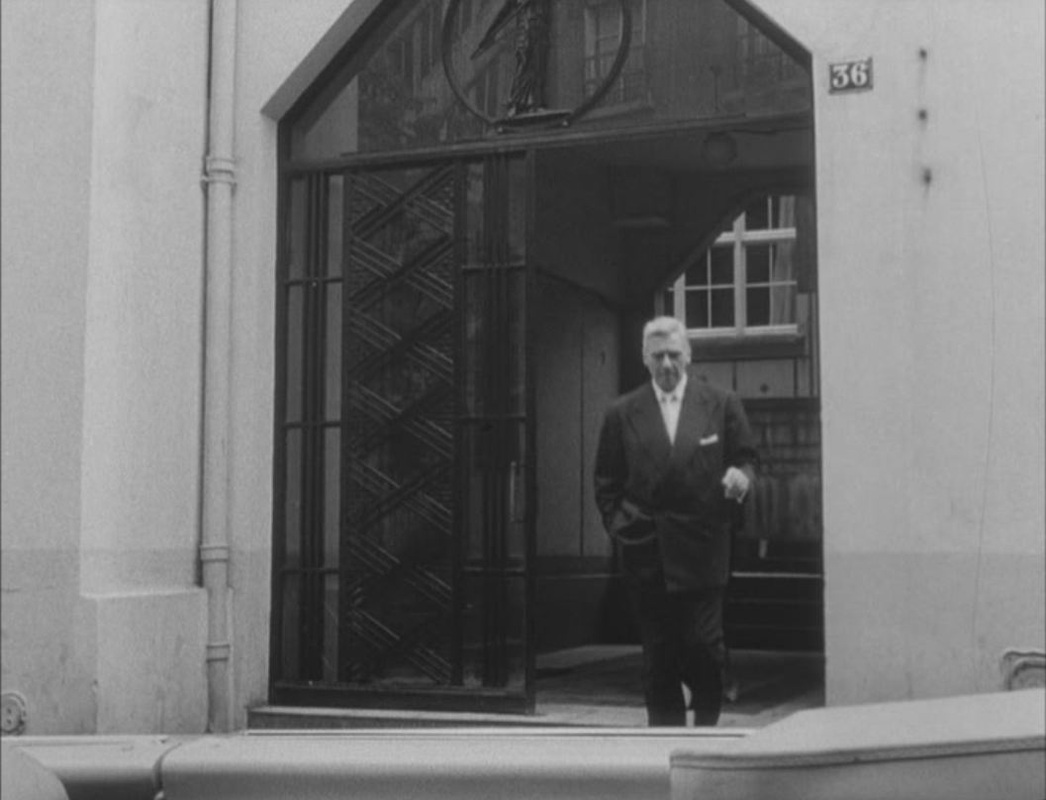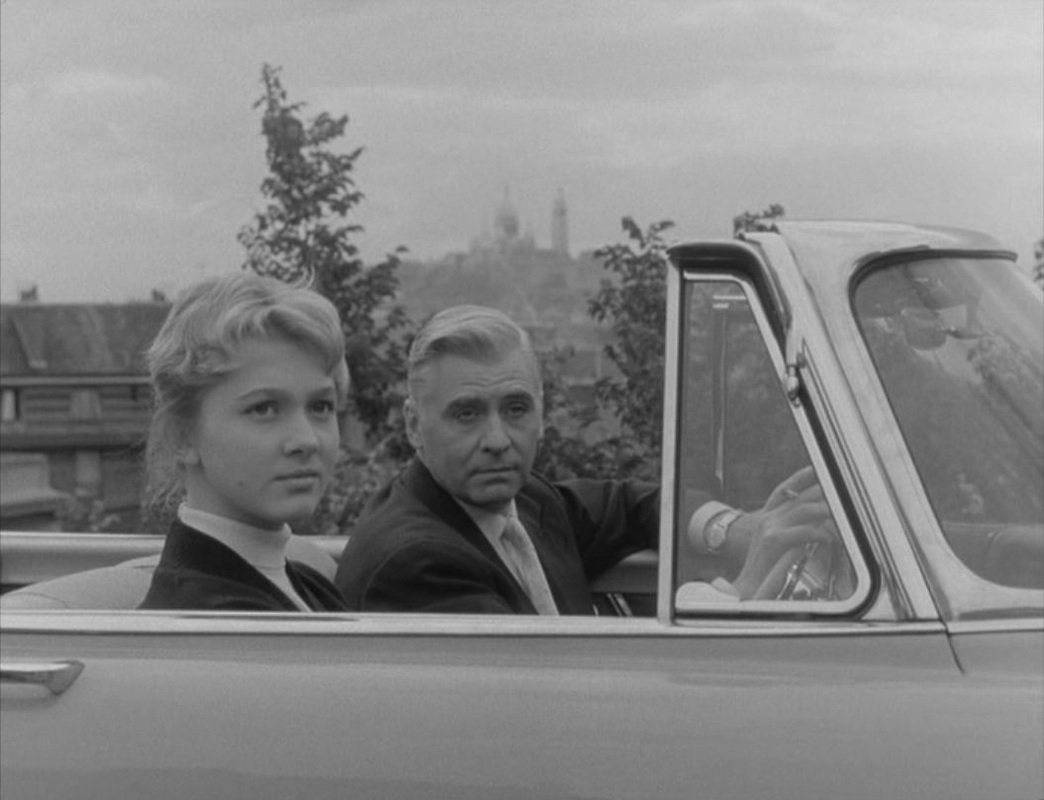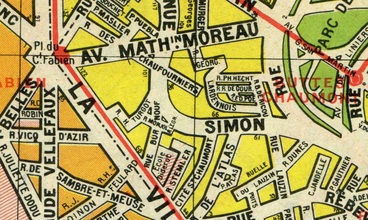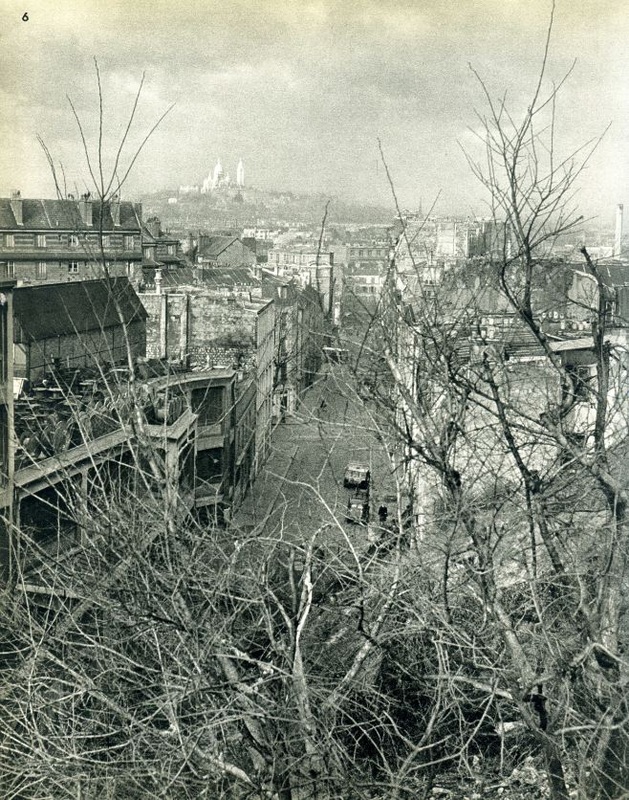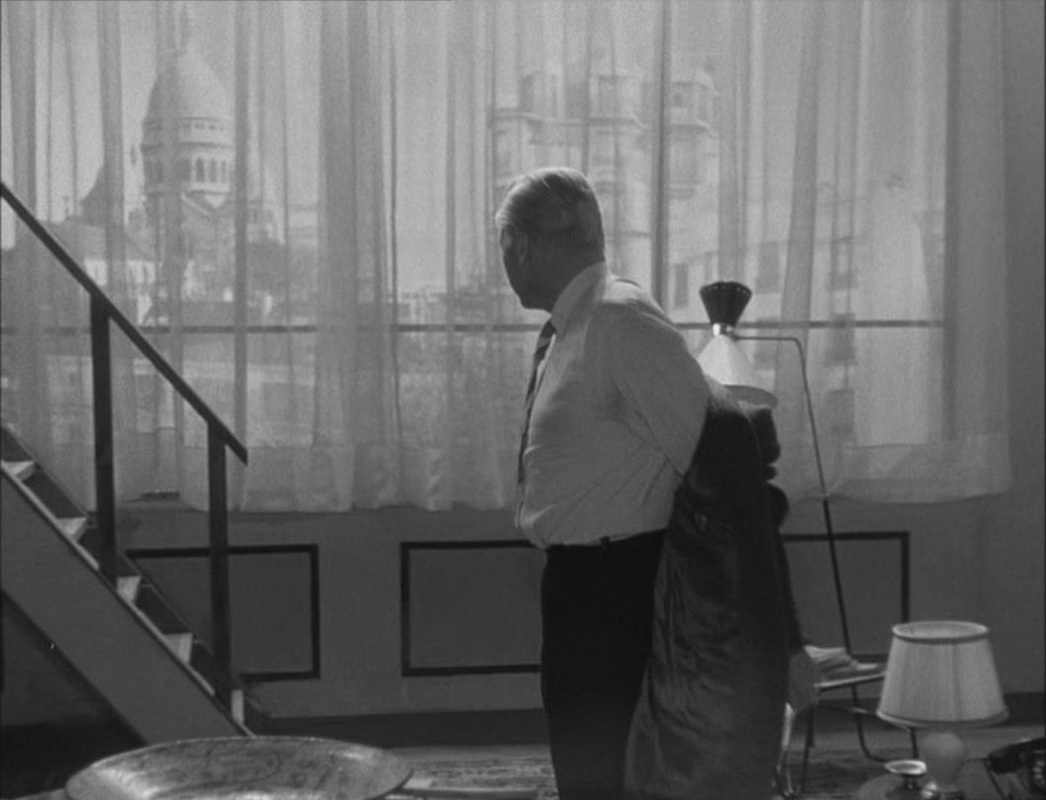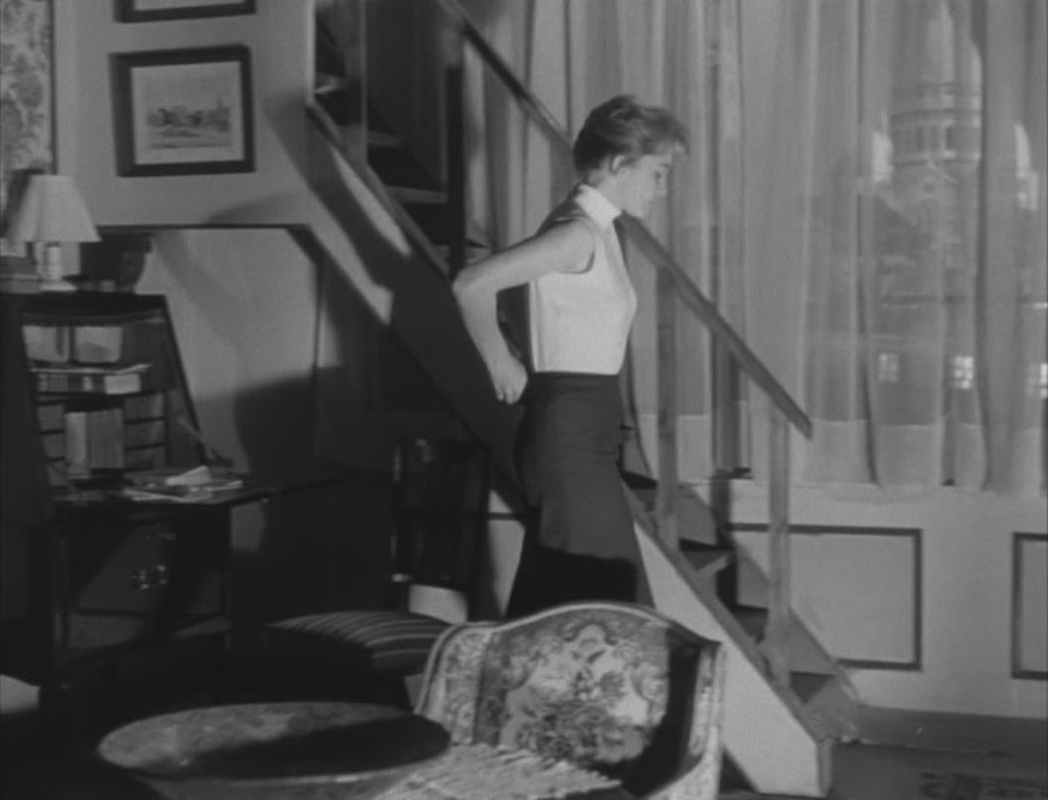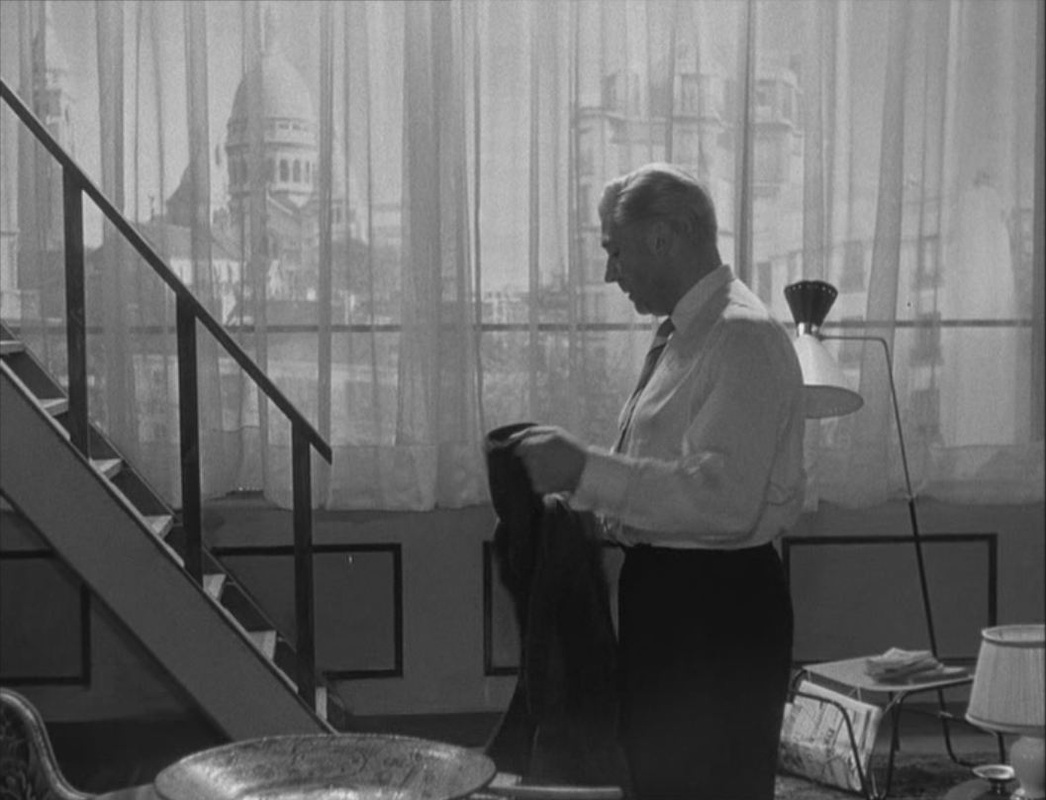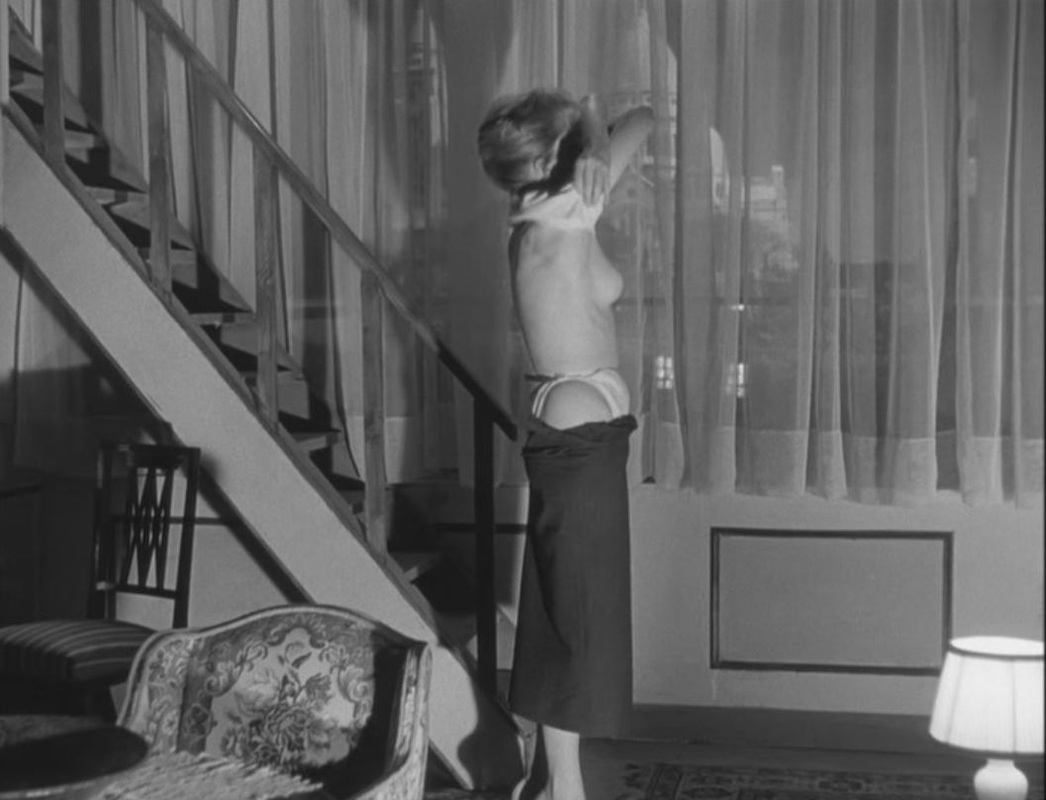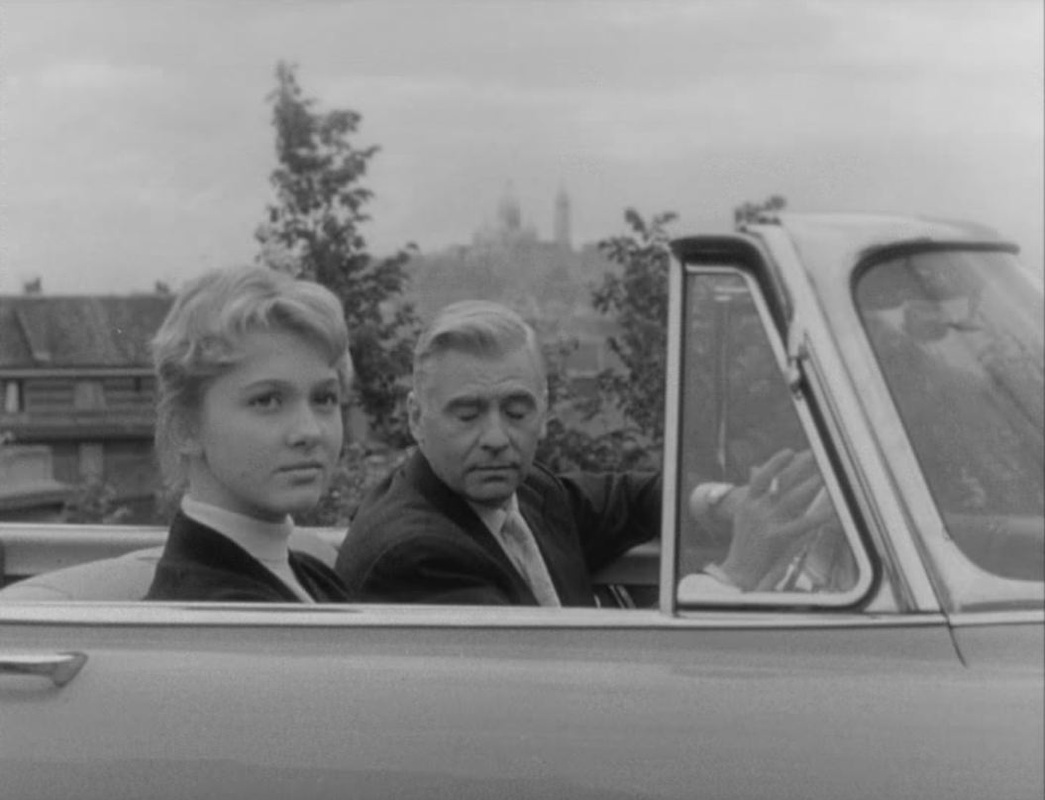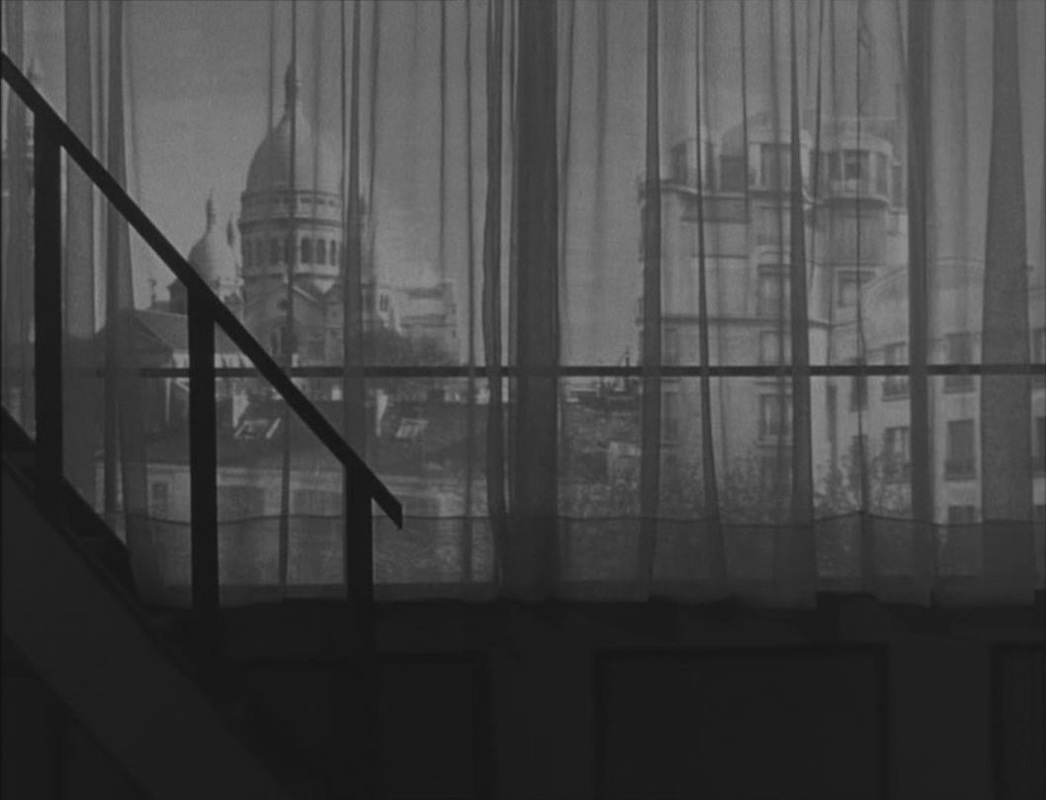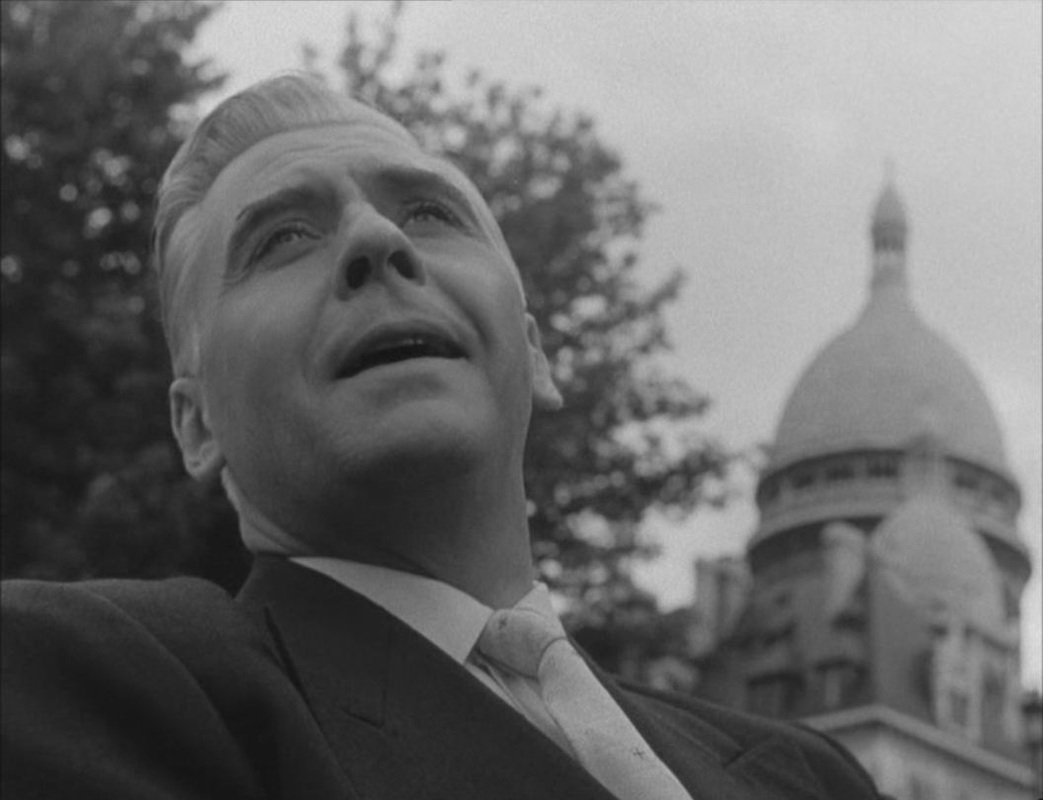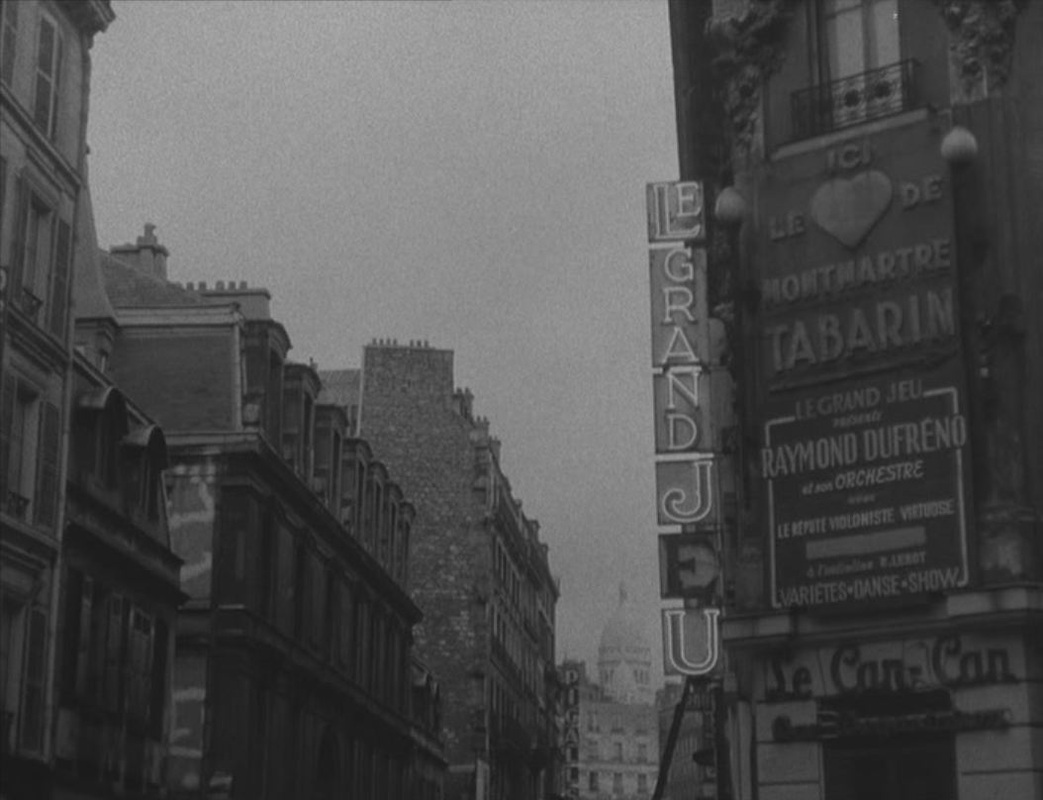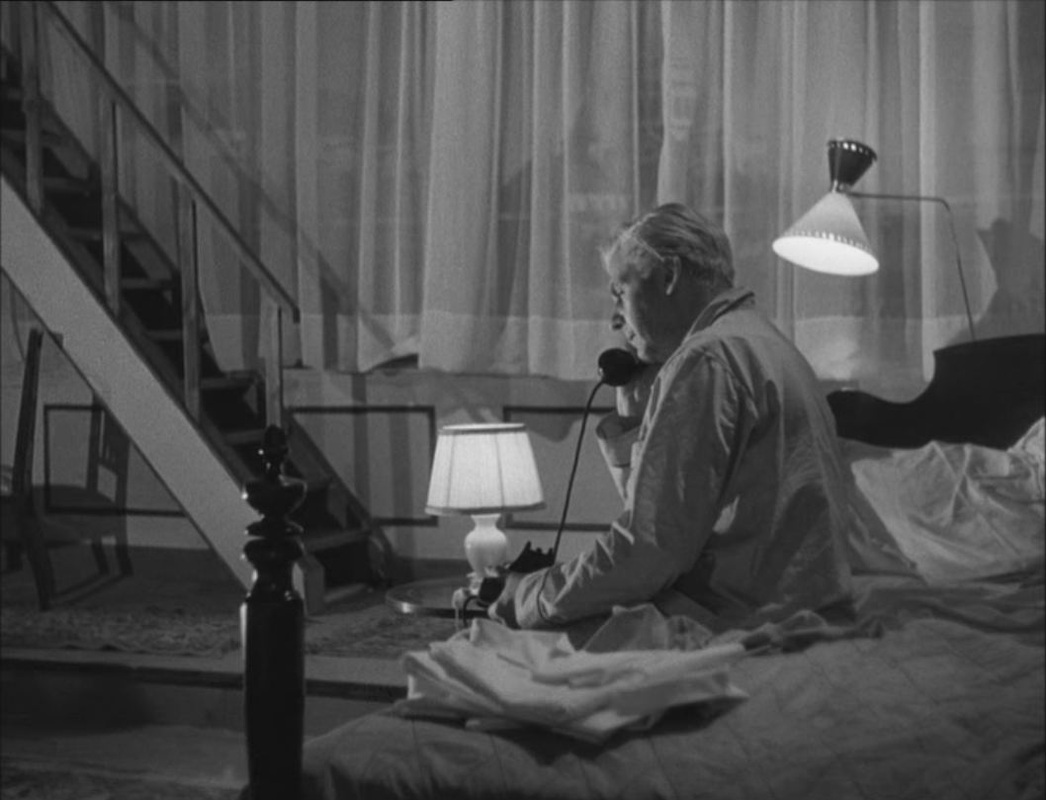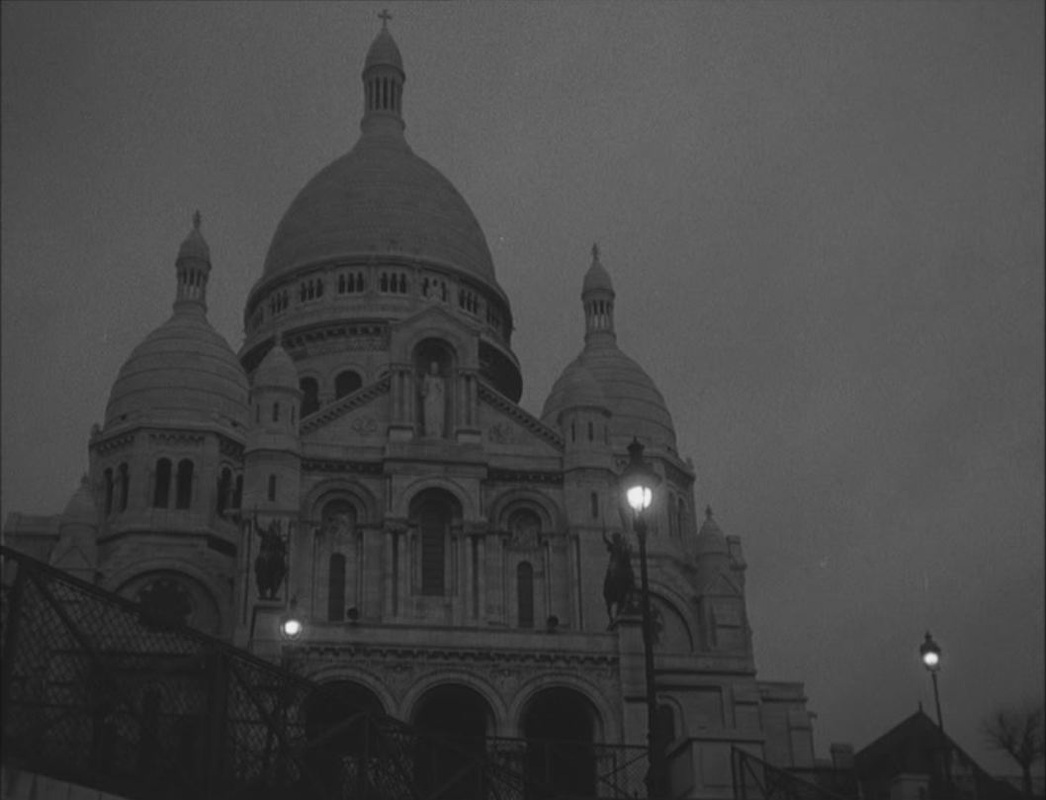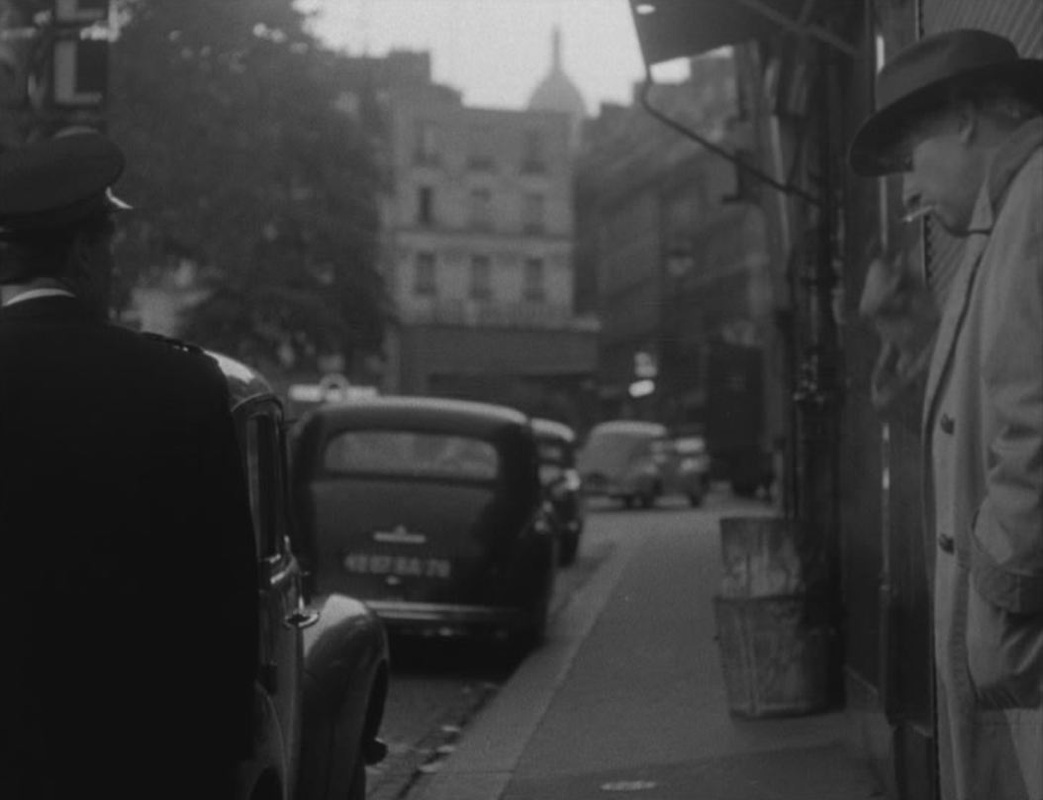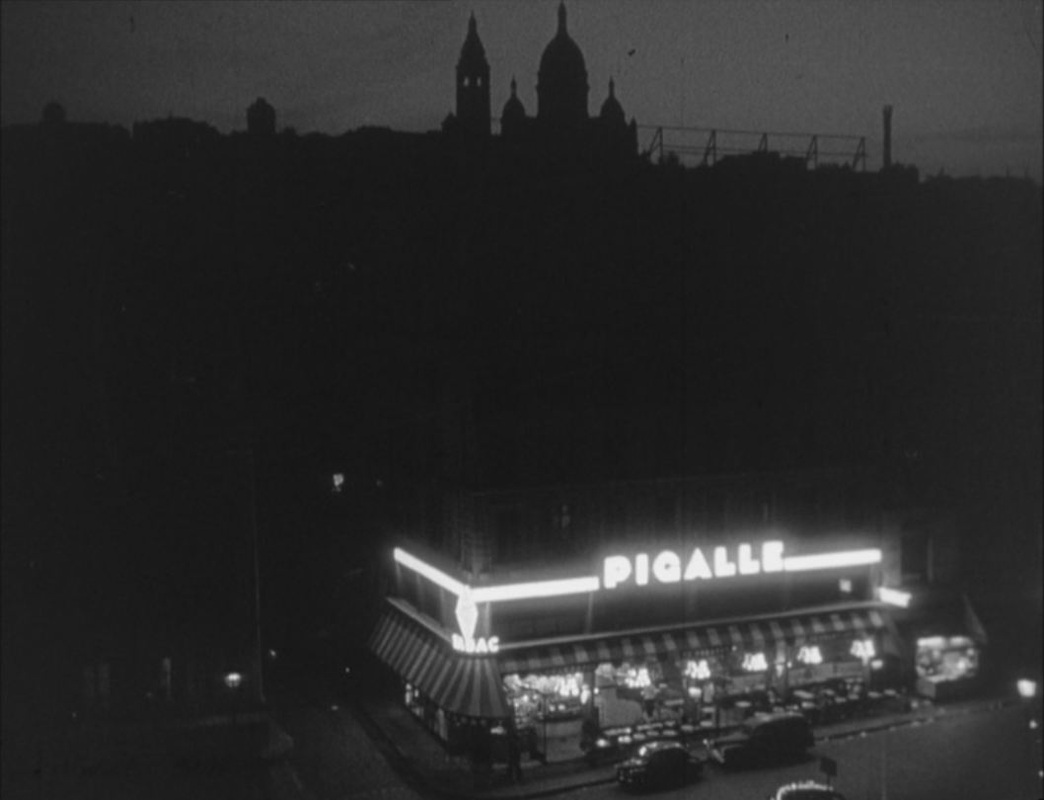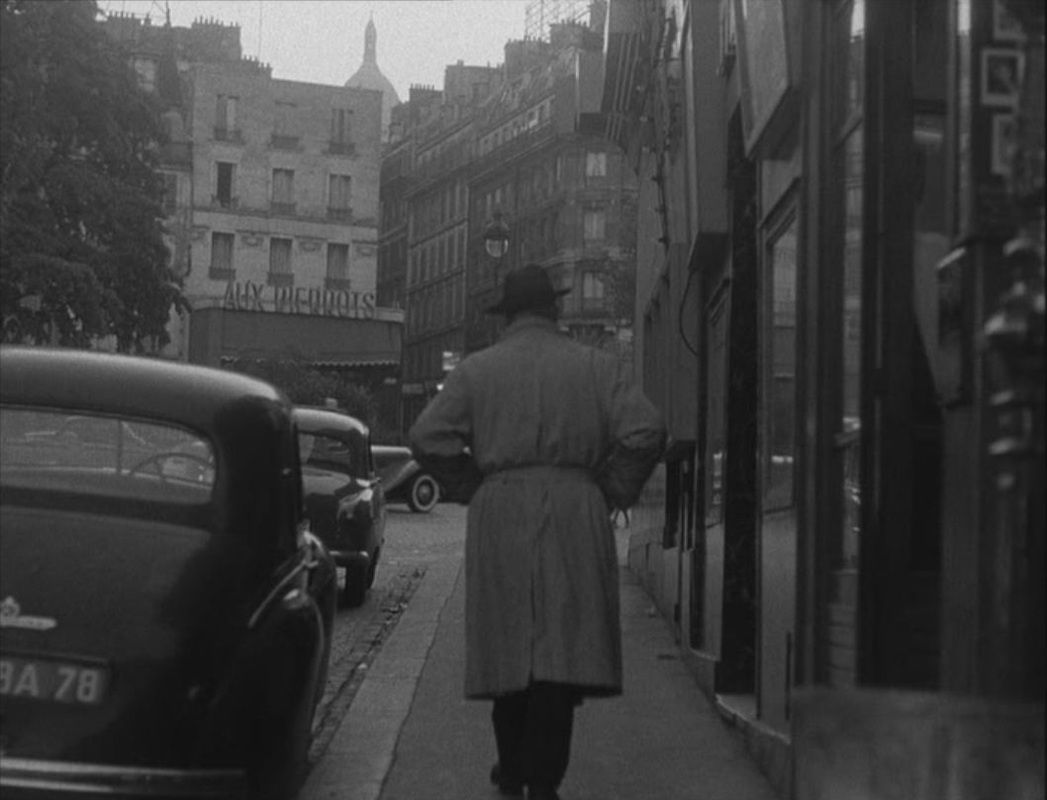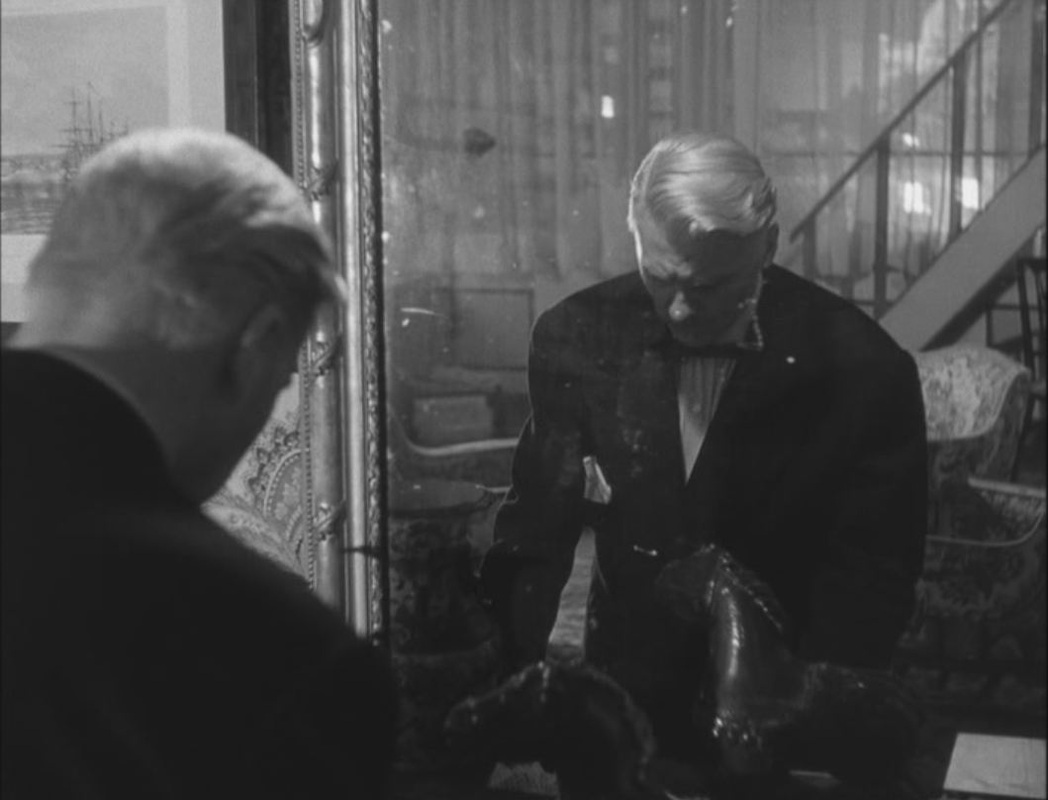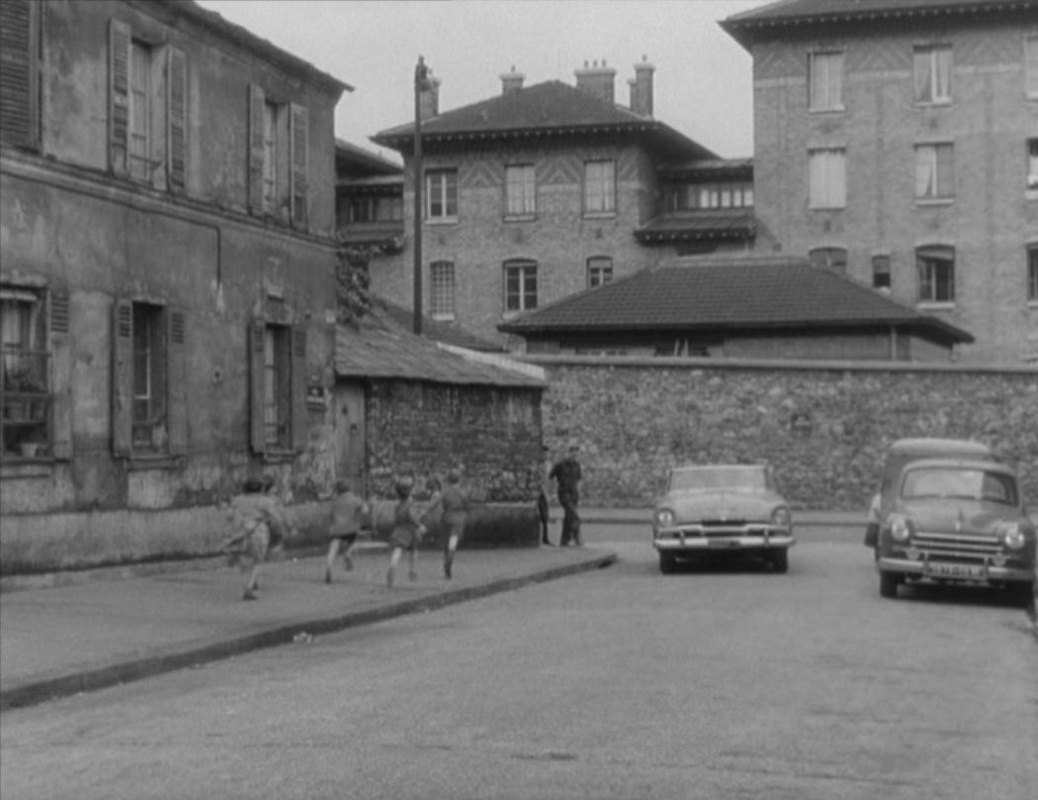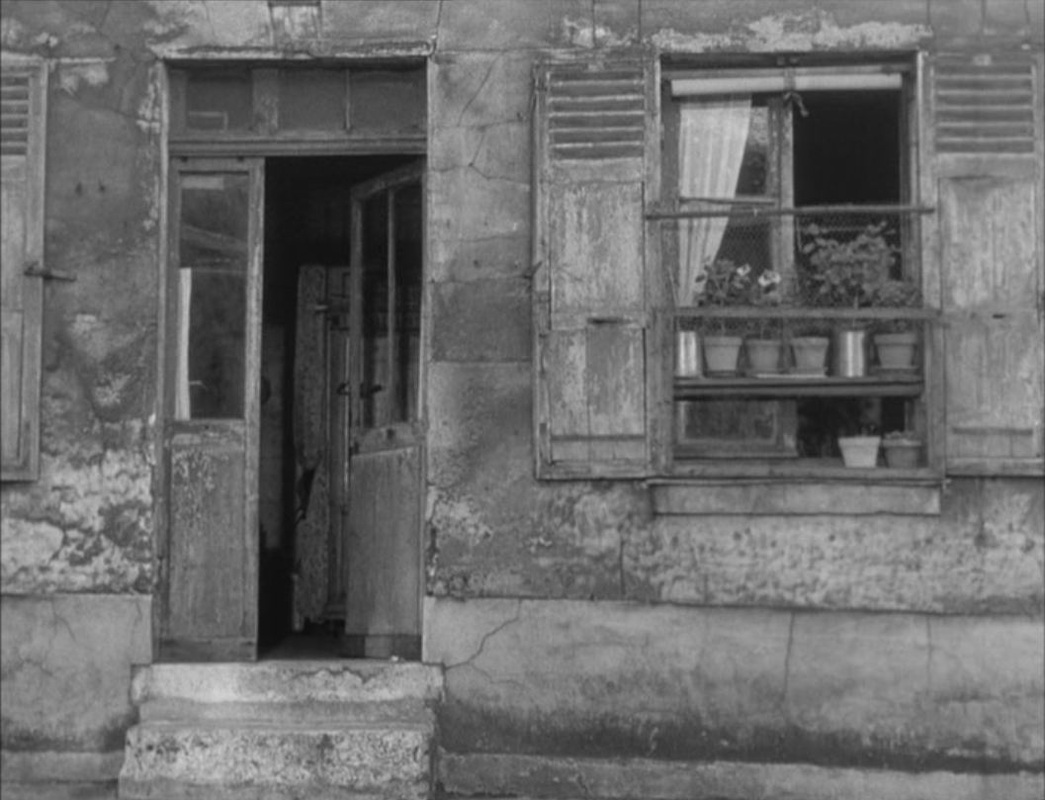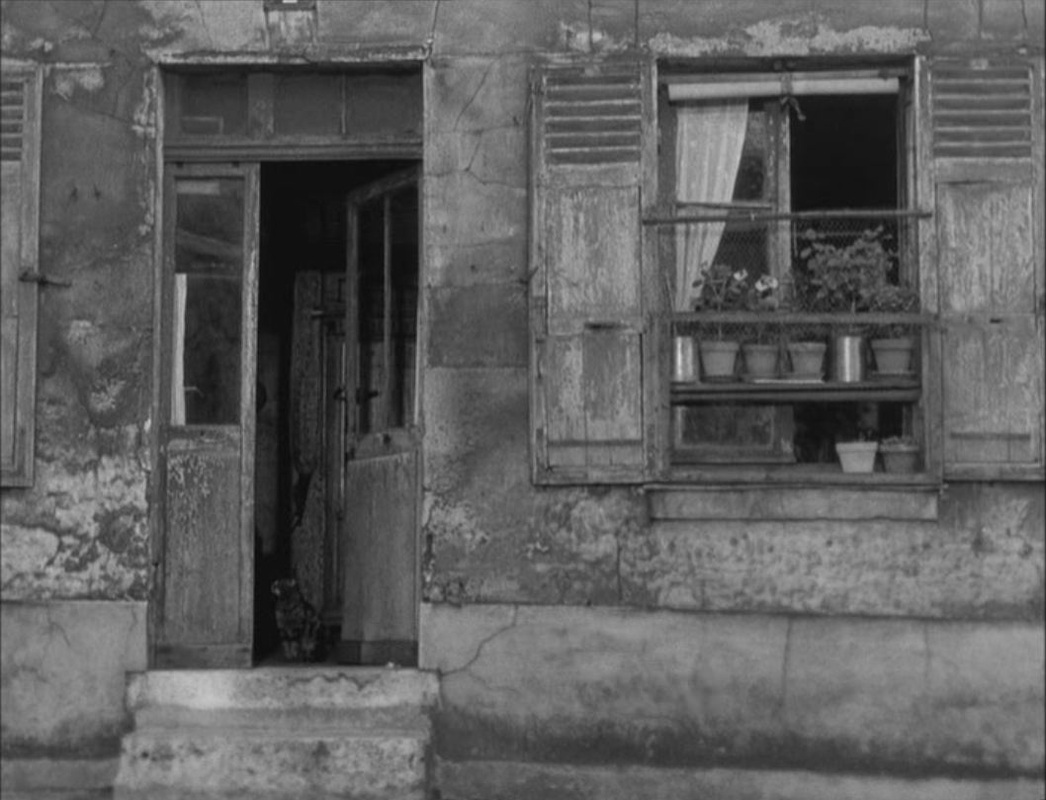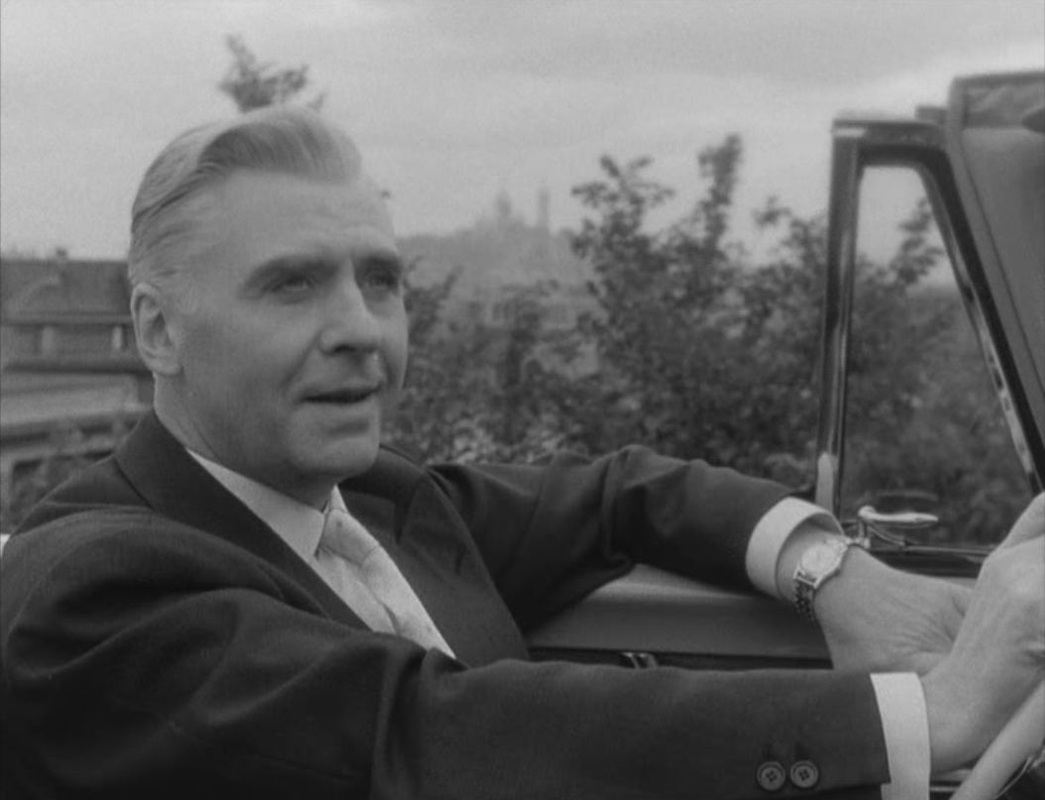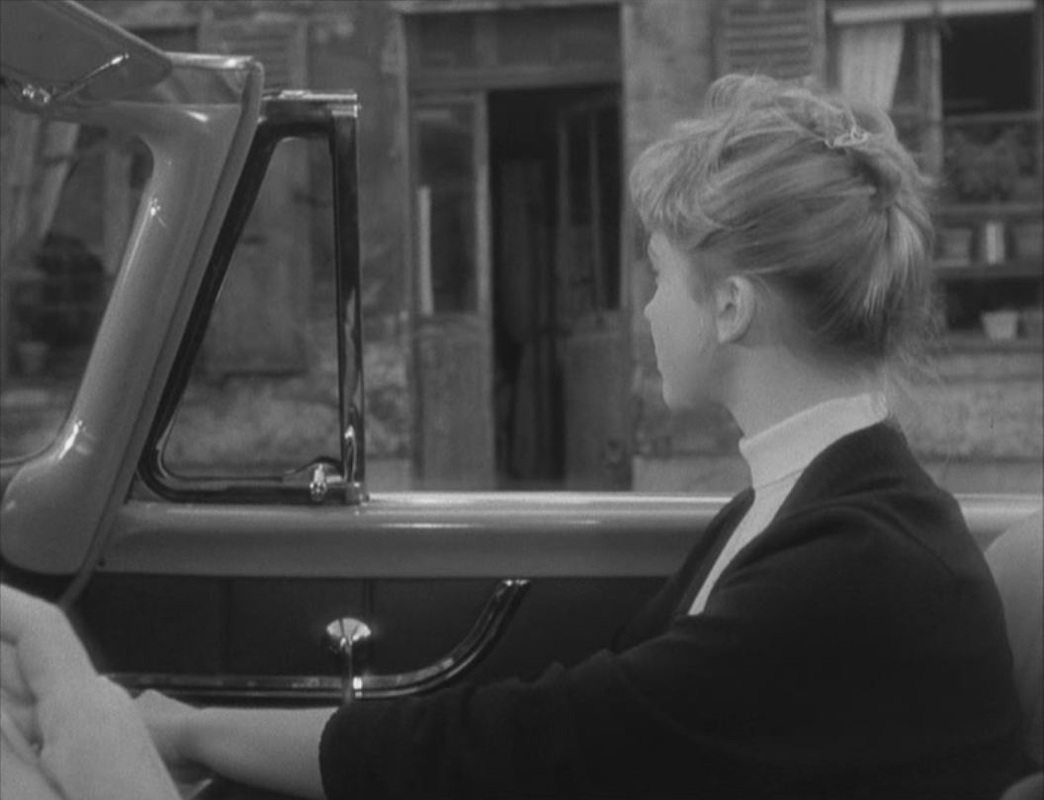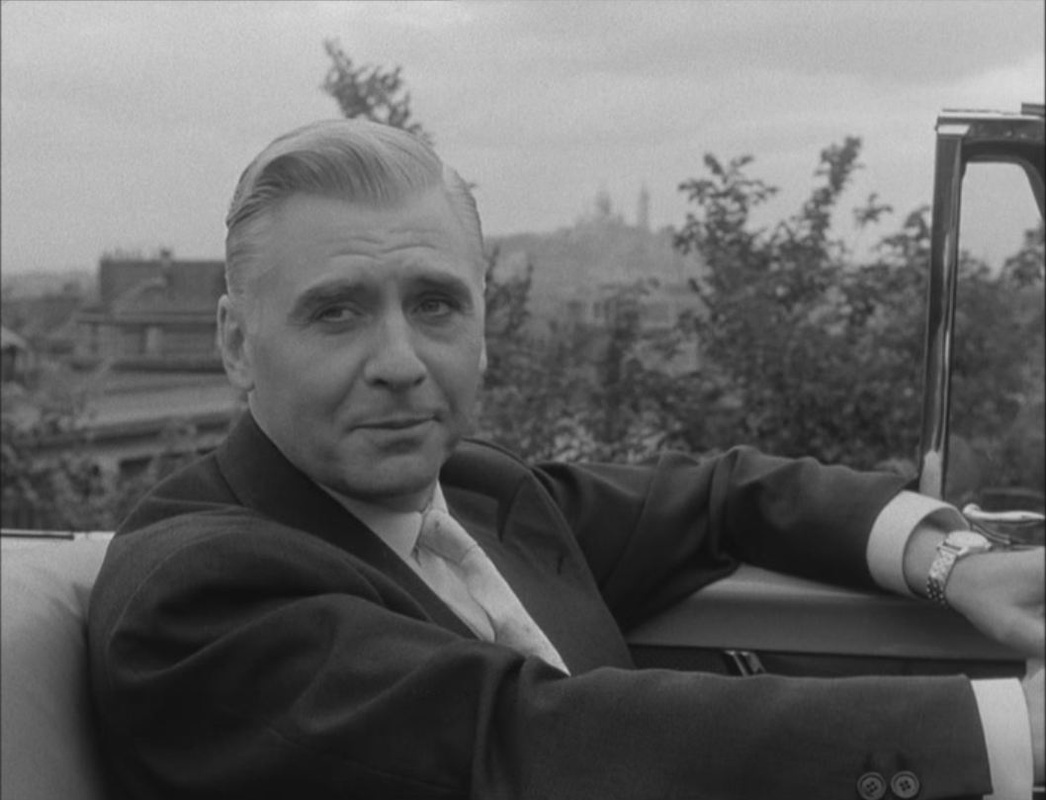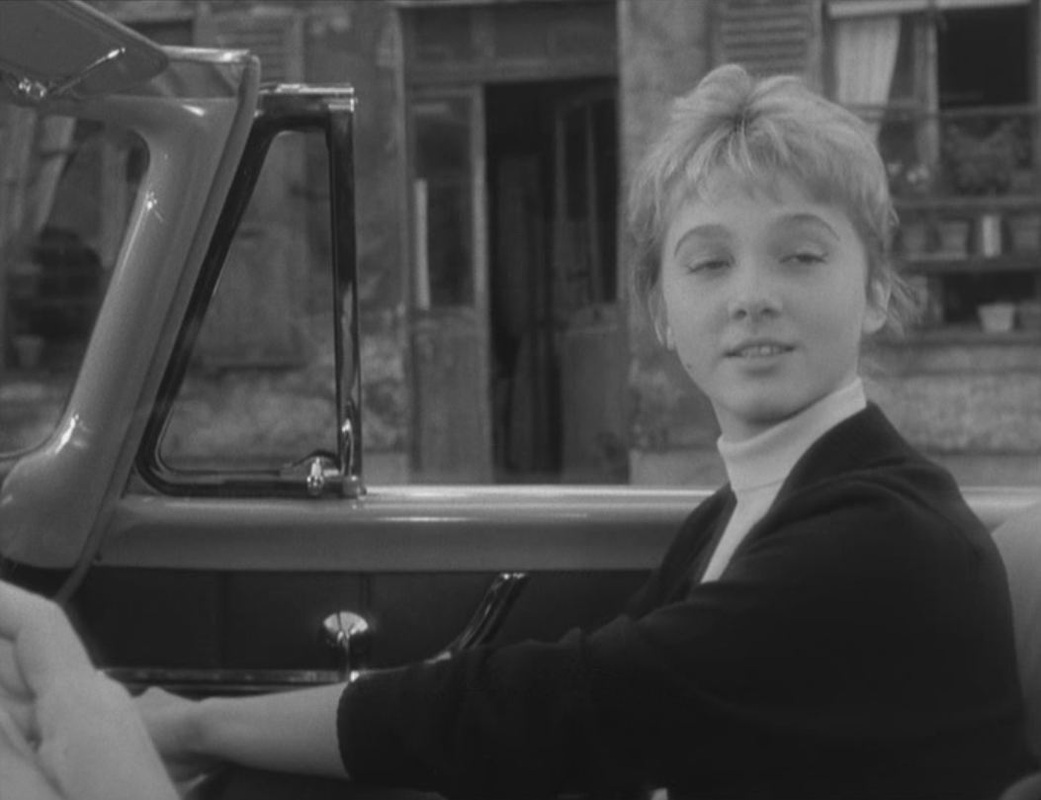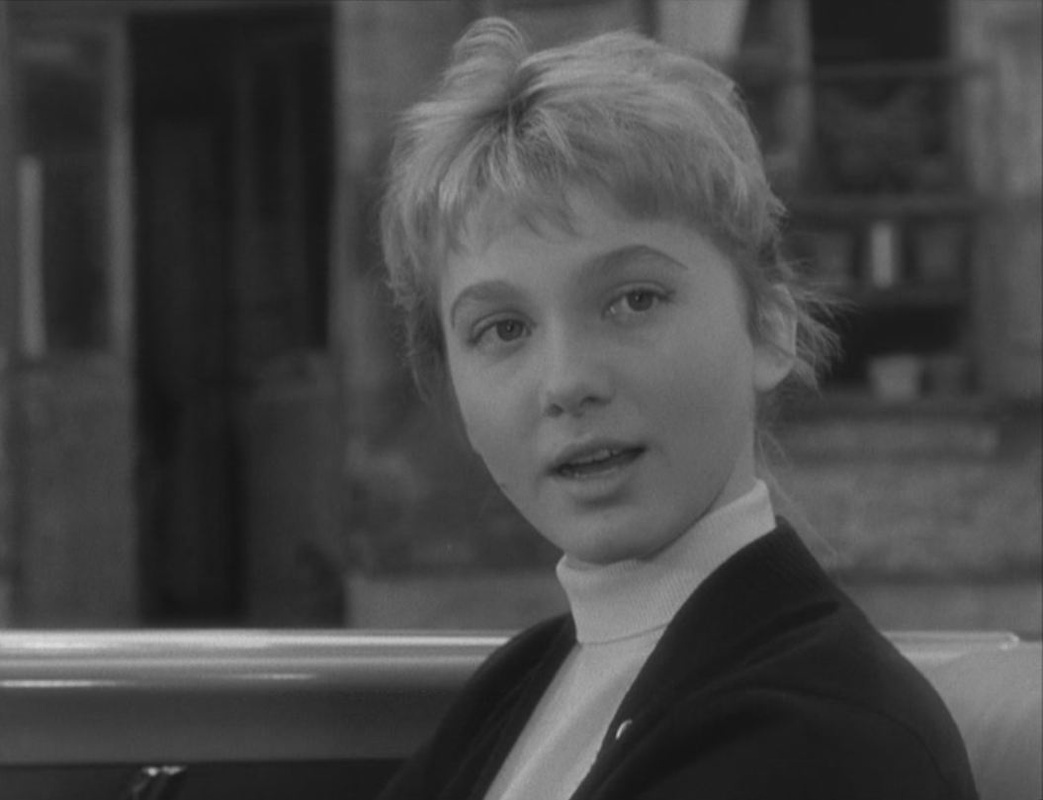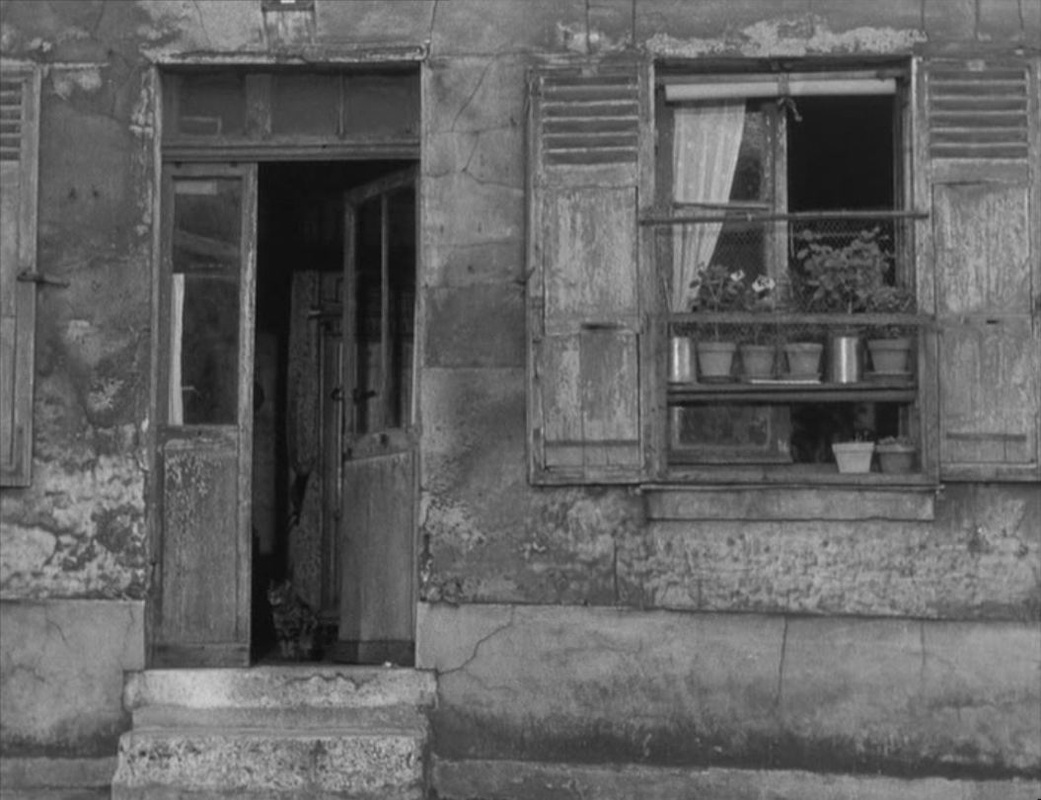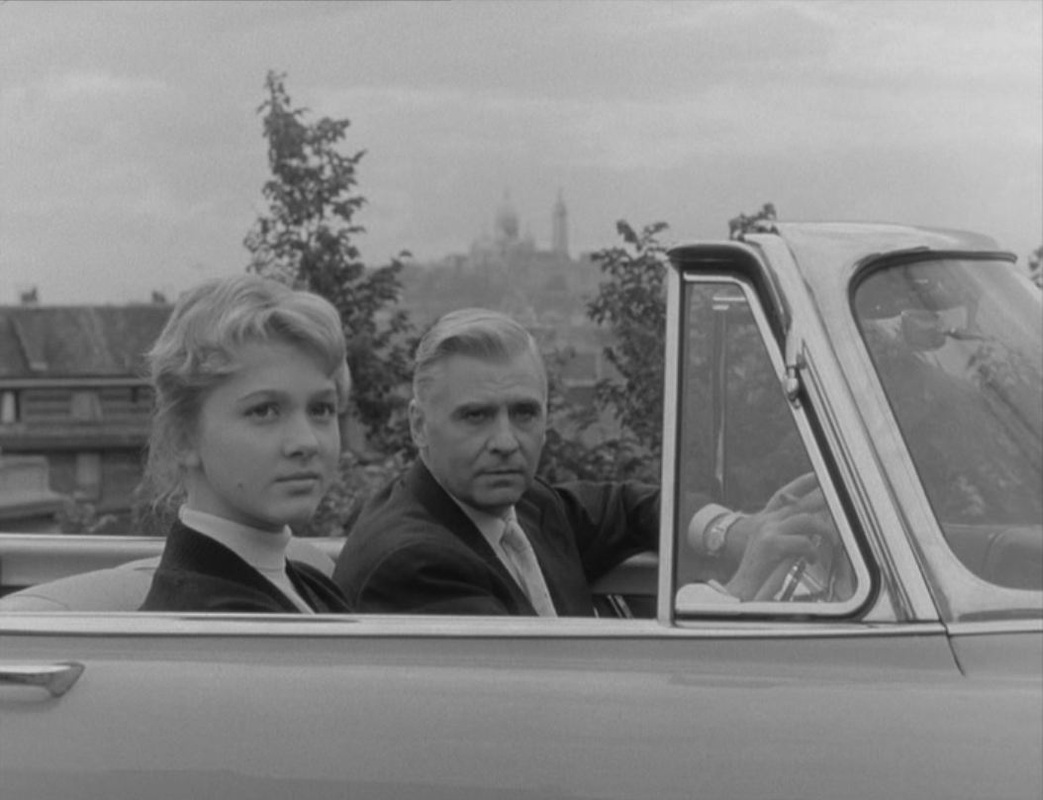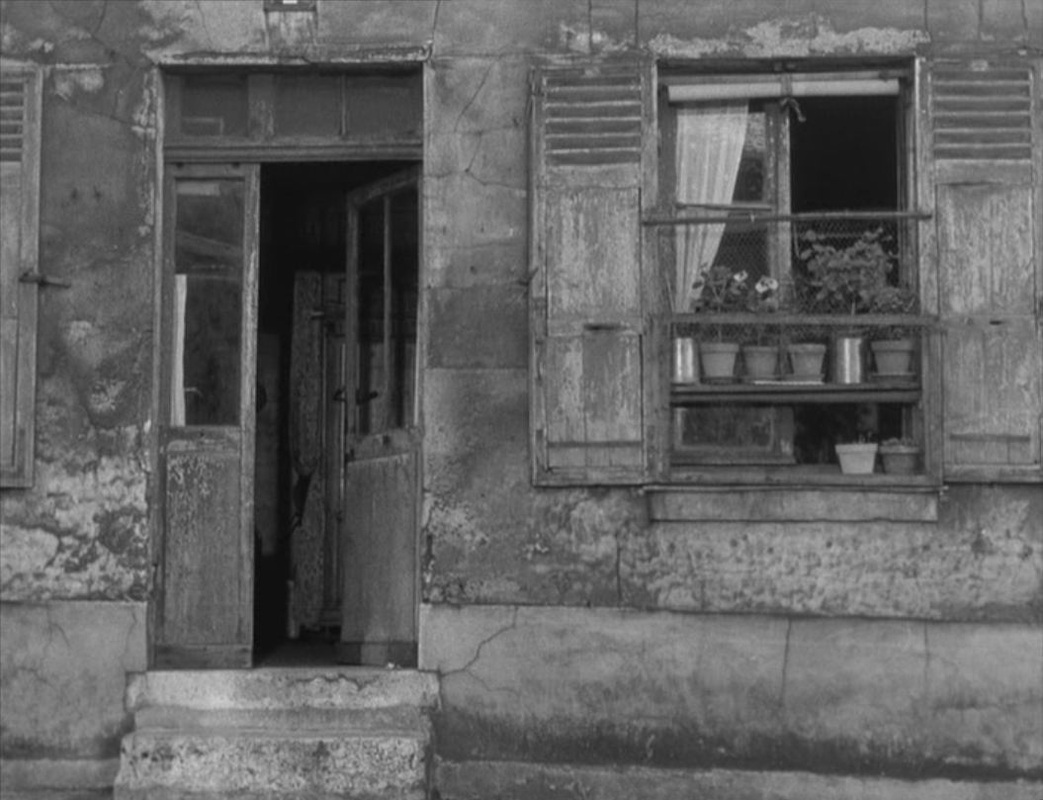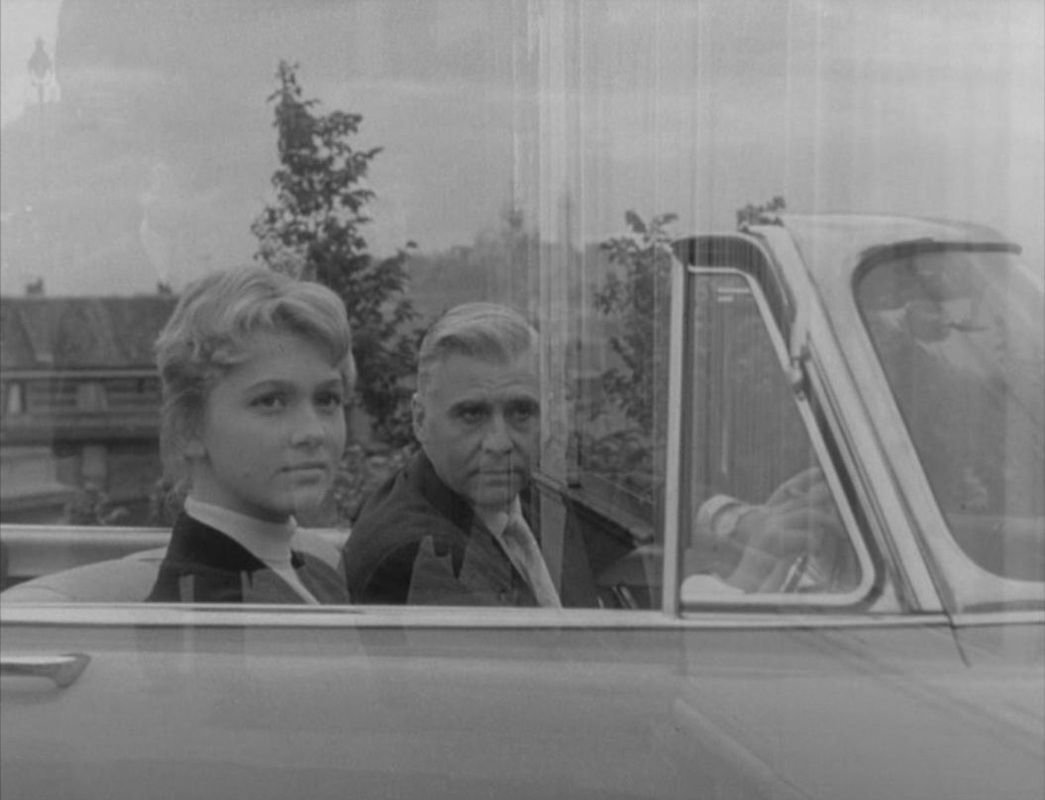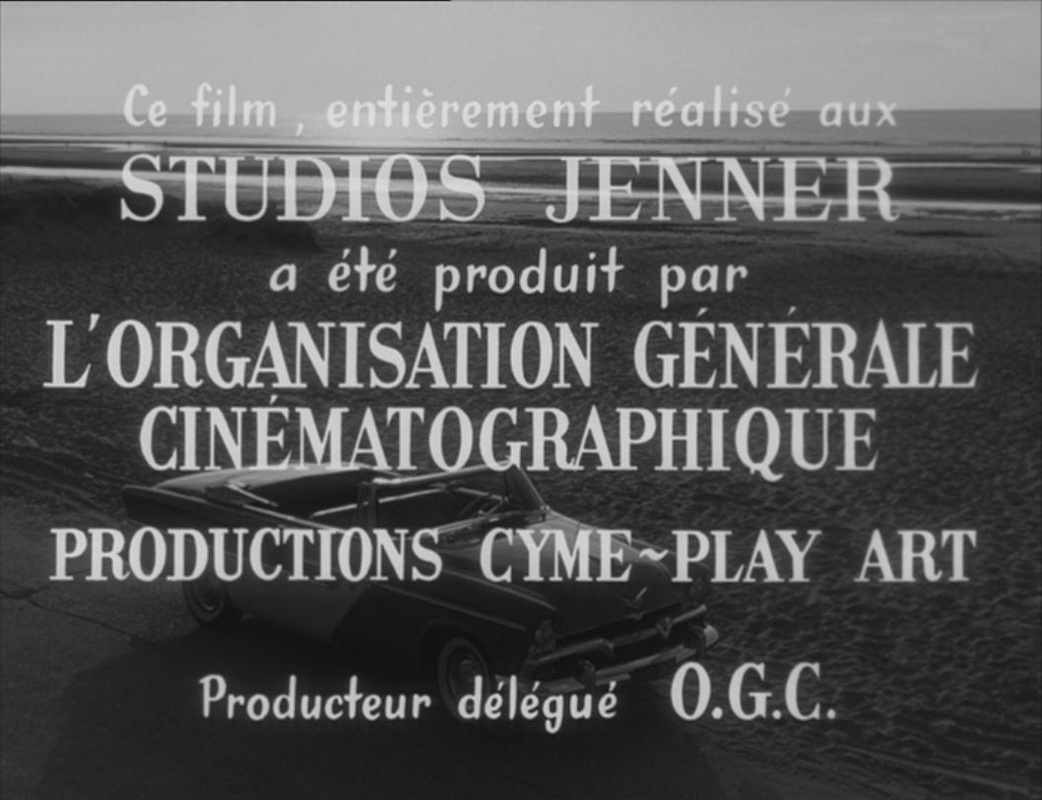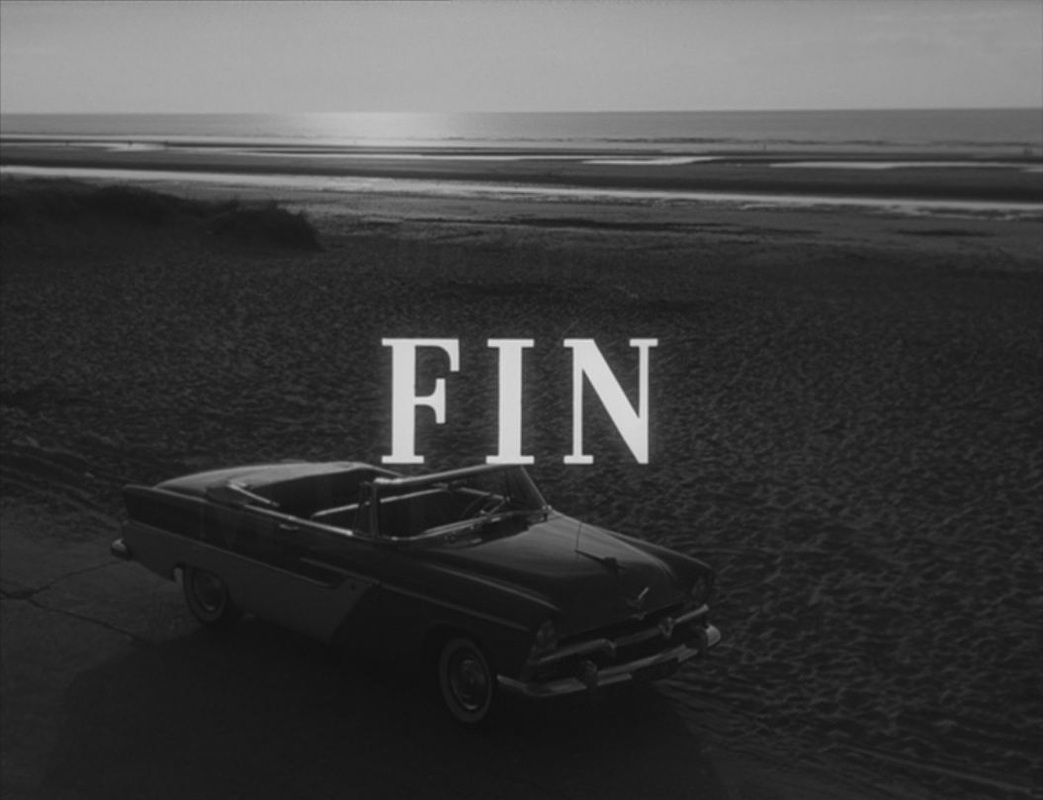Godard & Melville: the view from the rue Jenner
At the end of Vivre sa vie, Godard places his camera on the rue Gustave Mesureur and waits for his protagonists to turn into the street from the rue Jenner. Six years before, Melville had placed his camera in more or less the same place to do more or less the same thing. Some things are different: the framing; the cinematographers (Henri Decae for Melville, Raoul Coutard for Godard); the cars (a Plymouth Belvedere and a Renault Frégate in Bob le flambeur, a Ford Galaxie Sunliner and a Peugeot 404 in Vivre sa vie) - but still the one is clearly modelled on the other.
The street on which the cameras were placed is no longer there, replaced by modern flats in the 1970s. The junction is just below the J of rue Jenner on the map above.
(I am writing this piece partly as a mea culpa because in an article a few years ago (here) I identified the street in Vivre sa vie wrongly as the nearby rue Esquirol, into which the rue Gustave Mesureur led until its demolition. I apologise for misleading anyone on this point.)
(I am writing this piece partly as a mea culpa because in an article a few years ago (here) I identified the street in Vivre sa vie wrongly as the nearby rue Esquirol, into which the rue Gustave Mesureur led until its demolition. I apologise for misleading anyone on this point.)
Above are two views of the wall on the rue Jenner, behind which we see the Hôpital de la Pitié. A little further down is the entrance to the maternity section of the hospital, seen here on Google Maps and in Dimitri Kirsanoff's 1926 film Ménilmontant:
Melville's studios were on the rue Jenner, backing onto the rue Gustave Mesureur, and a number of his films were shot there, though Bob le flambeur is the only one in which I have seen the street outside the studios. With the homage paid to that moment in Vivre sa vie and the brief shot of the hospital in Ménilmontant, these may be the rue Jenner's only appearances on screen.
|
In Godard's film there is an irony in going all the way to Melville's studios, only to shoot on the street outside. The journey there may also be some kind of homage paid to Melville, referencing his loose approach to topography, since to arrive at this place Nana and her killers have come by a somewhat circuitous route. They collect her from her apartment on the rue de Verneuil, in the 7e. In the next shot they have crossed the river and are driving north past the arc du Carrrousel: After which they are heading up the avenue de l'Opéra: So far this is a coherent trajectory, but then suddenly they are over in the east of Paris, heading south past a factory ('Enfer et ses fils') on the rue de Rambouillet, in the 12e: |
They arrive at the studios in the 13e, where Nana is killed:
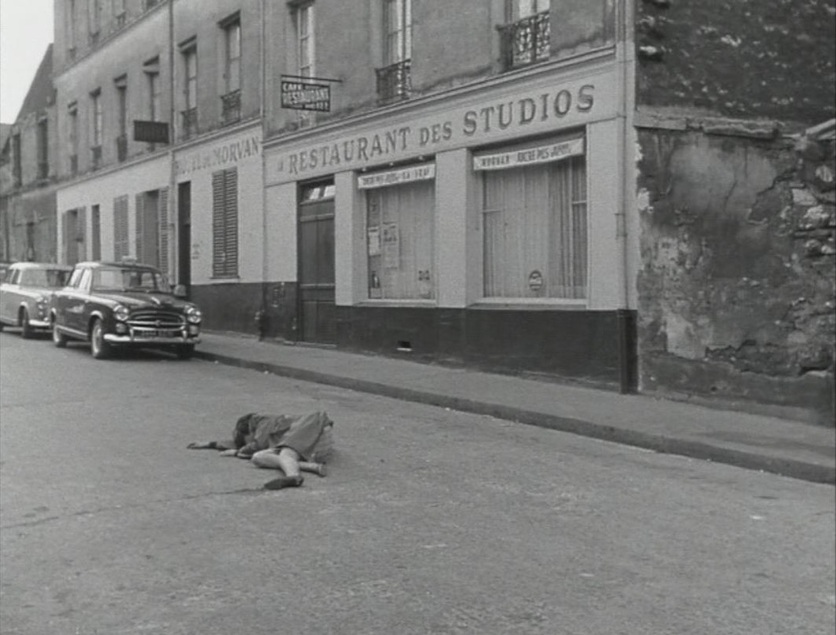
The stages in this itinerary are joined by fades to and from black. As signals of spatial and temporal ellipses these are redundant. They serve, rather, as rhythmic counterpoint to the disconnected phrases on the soundtrack, where Nana and Raoul discuss what she has done wrong as a prostitute, interrupted by a voice out of nowhere complaining about how hard it is for a working person to get to go to the cinema. This is the second conversation between Nana and Raoul in a car. The first was in tableau eight, where a stichomythic exchange on the subject of a prostitute's role was accompanied by a montage of illustrative shots, all linked by clean cuts. The contrast here suggests that, with these slow fades in and out of black, this is another level at which Vivre sa vie is a sample table of cinematic devices, detached from their expressive functions. (Compare with the catalogue of ways to represent conversation that Vivre sa vie compiles.)
Curiously, in the sequence from Bob le flambeur that Godard rephrases, Melville also seems to be interested in the redundancy of device. After a dissolve signalling the time it takes to cover the distance from Bob's apartment in Montmartre to the place where he takes Anne, the car turns a corner and, as it approaches the camera, a wipe from right to left, loosely corresponding to the car's direction, brings into view the front of a house that will be the topic of discussion in what follows:
Curiously, in the sequence from Bob le flambeur that Godard rephrases, Melville also seems to be interested in the redundancy of device. After a dissolve signalling the time it takes to cover the distance from Bob's apartment in Montmartre to the place where he takes Anne, the car turns a corner and, as it approaches the camera, a wipe from right to left, loosely corresponding to the car's direction, brings into view the front of a house that will be the topic of discussion in what follows:
I don't know what in every instance a wipe of this type is supposed to mean, but here I think it is meaningless. An earlier wipe, from top to bottom of the screen, when Bob had brought Anne from the street up to his apartment, had similarly matched a movement of sorts (the concierge sitting down), but the device there was used to link two different spaces and to express their vertical relation:
On the rue Gustave Mesureur, the wipe links the space only to itself. I don't remember seeing before this a wipe that brings into view something that was already in view in the wiped-over image. You can see, below, that the window to the right is visible also to the left, just right of the door:
Perhaps this is a signal of ellipsis - the car pulls up, the man and woman take their time to take in the surroundings, and then after a while the man starts talking about the house - but it is quite superfluous, and it looks like device for its own sake (of which of course I approve).
As if to redress the wrong of redundancy, this sequence ends with a classical deployment of device, a dissolve from Bob and Anne to two different people walking down a street:
As if to redress the wrong of redundancy, this sequence ends with a classical deployment of device, a dissolve from Bob and Anne to two different people walking down a street:
This dissolve marks a spatial ellipsis very neatly, since behind Bob and Anne we can see the butte Montmartre in the distance, and the two men are walking along the rue de Douai, which is at the foot of the butte, just below Pigalle. It also marks a temporal ellipsis, as we realise on finding Bob and Anne at a café further along the street, and no longer somewhere on the other side of Paris:
|
A topographical anomaly arises when considering exactly how great a distance has been covered in the time of the dissolve. Bob and Anne were in front of a house on the rue Gustave Mesureur, having driven down the rue Jenner and turned right into that street. The house is then to the right of them when they stop and look at it, on the north side of the street: Bob: That's where I was was born. At the time it wasn't quite so filthy. It's from there that I set out to conquer the world. I was fourteen when I left my mother. Anne: And did you go far? Bob: Yes, to the Porte de Saint Ouen. |
The Porte de Saint Ouen, just north of Montmartre, isn't much more salubrious than the house they are looking at.
The countershot shows them from the direction of the house, with the butte Montmartre behind them, but a camera pointing from the north side of the rue Gustave Mesureur would not be able to register this view of Montmartre, which is in the other direction.
The countershot shows them from the direction of the house, with the butte Montmartre behind them, but a camera pointing from the north side of the rue Gustave Mesureur would not be able to register this view of Montmartre, which is in the other direction.
All the camera would see is the side wall and windows of the Jenner Studios - as on the left side of the picture below:
The view of Montmartre is a conceit, visualising the point Bob wishes to make about how far he has come from his humble beginnings - he now lives in Montmartre, in an elegant Deco edifice:
The question remains: if they cannot be on the rue Gustave Mesureur with Montmartre behind them, then where are they?
|
Calculating the angle from which we would have this view of the Sacré Coeur, and considering that we would have to be somewhere high - and remembering this photograph (right) taken by Willy Ronis in the early 1950s, I'd say that they are on the butte Bergeyre, in the 19e. More exactly, they are on the rue Georges Lardennois, overlooking the rue des Chaufourniers:
|
We see much of the Sacré Coeur in Bob le flambeur, but mostly it is is through the window of Bob's apartment, the interior of which is not on the avenue Junot, but reconstructed in the studio, rue Jenner. The view we are given is of a photographic backdrop:
In Bob le flambeur, then, there are two views from the rue Jenner: the actual Sacré Coeur in the distance, made to appear by montage as if it were seen from the rue Jenner; and a photograph of the Sacré Coeur, made to appear by staging as if it were seen through a window on the avenue Junot, rather than in the rue Jenner studio. Both views speak of Melville's playful engagement with the places he films, and with the places from which he films them.
See also: More views from the rue Jenner, here
With thanks to Ginette Vincendeau and Mike Schellekens for information provided.
With thanks to Ginette Vincendeau and Mike Schellekens for information provided.
Appendix 1
Here are nine other views of the Sacré Coeur in Bob le flambeur:
Here are nine other views of the Sacré Coeur in Bob le flambeur:
Appendix 2
Here are the fourteen shots that comprise the sequence in Bob le flambeur:
Here are the fourteen shots that comprise the sequence in Bob le flambeur:
